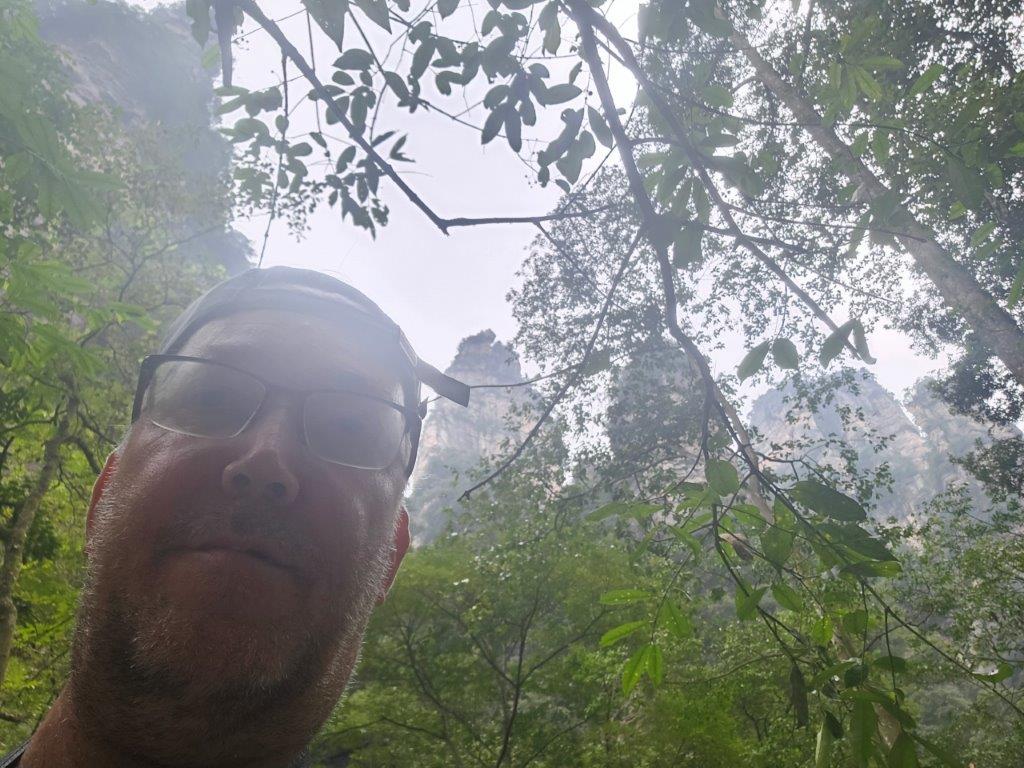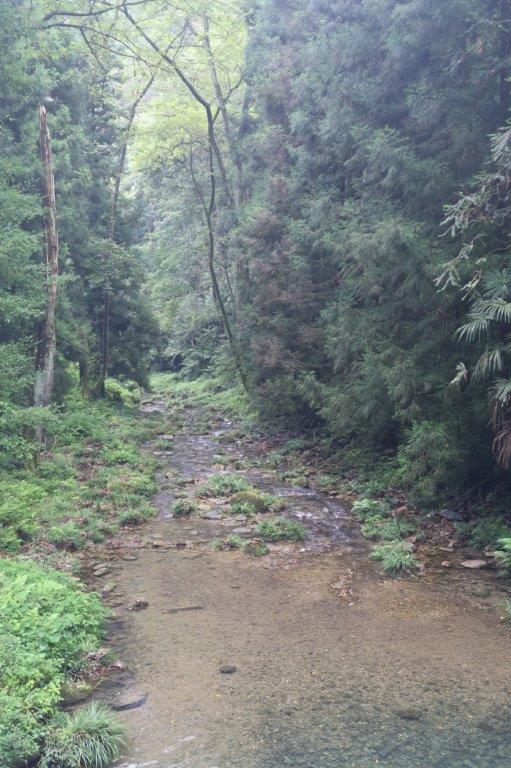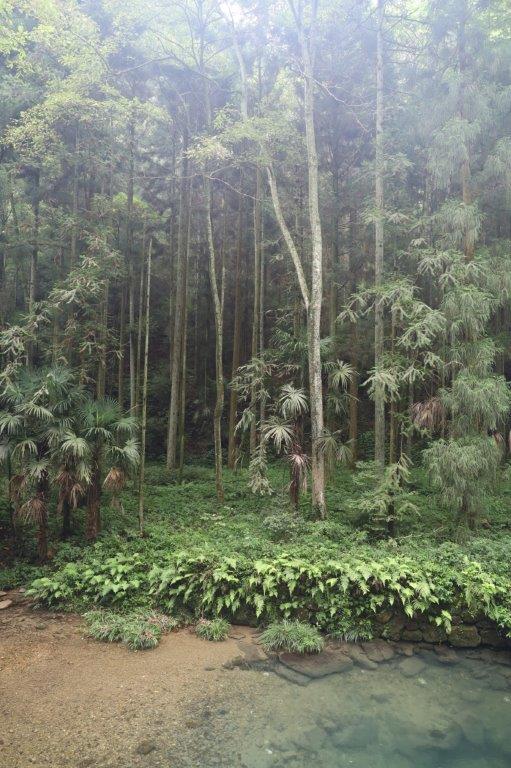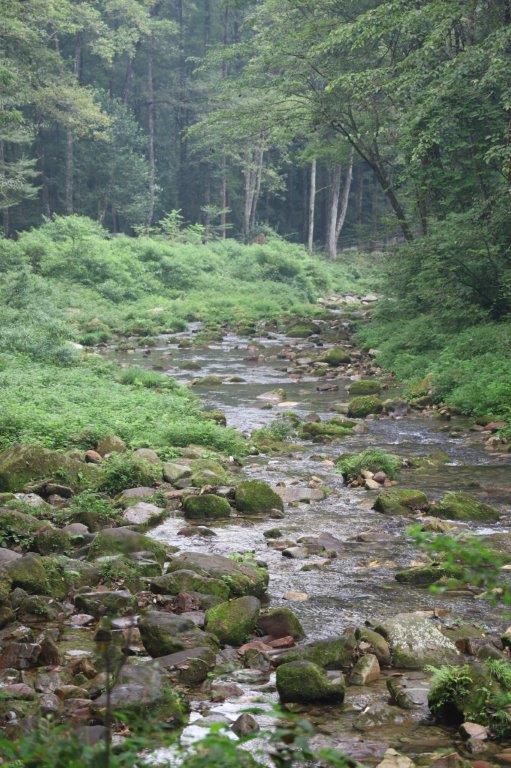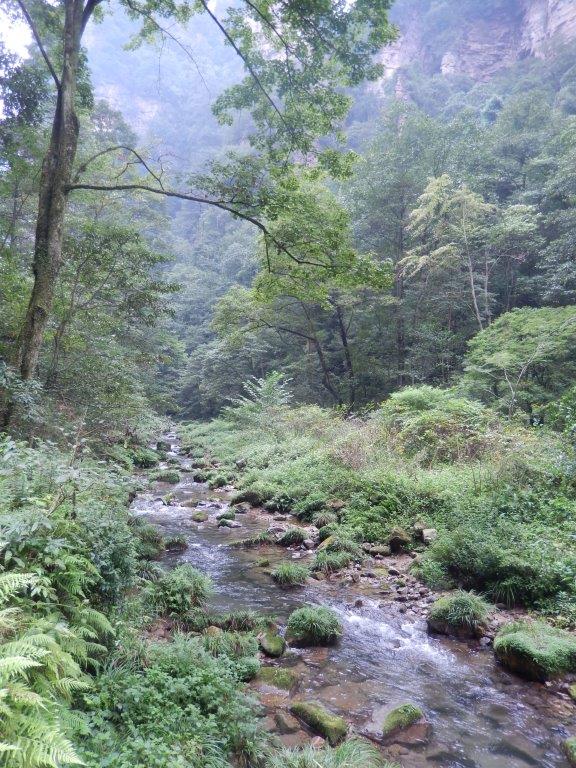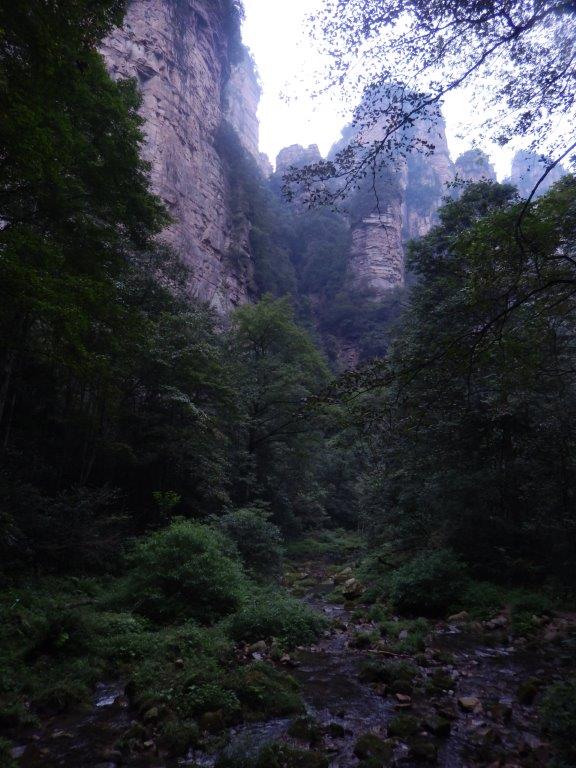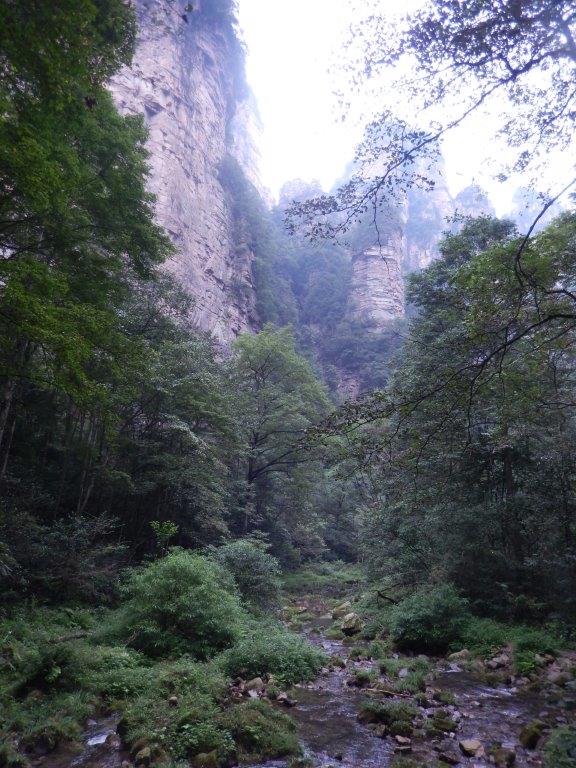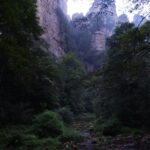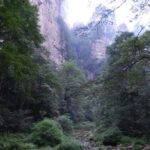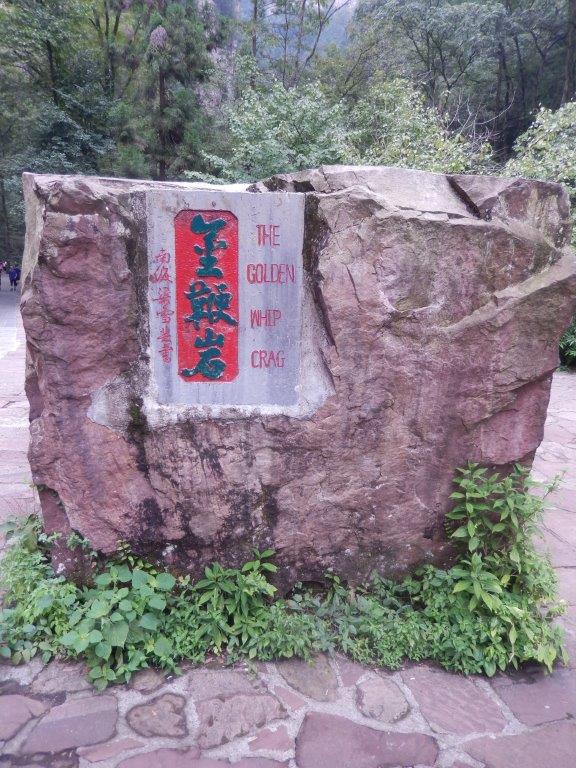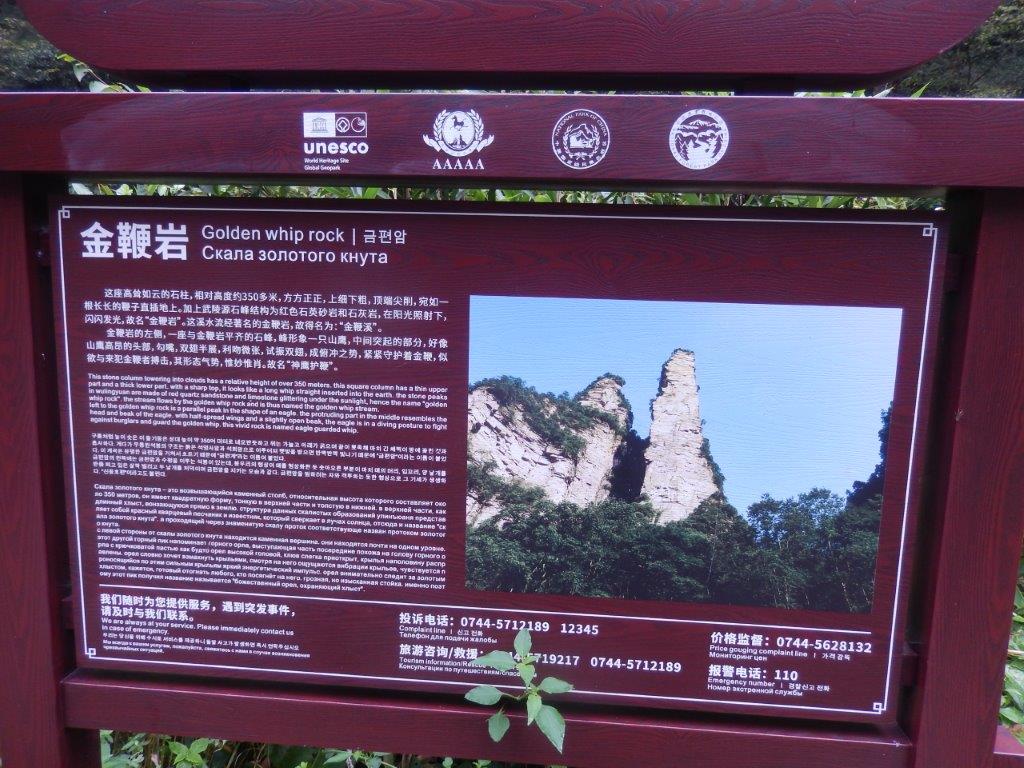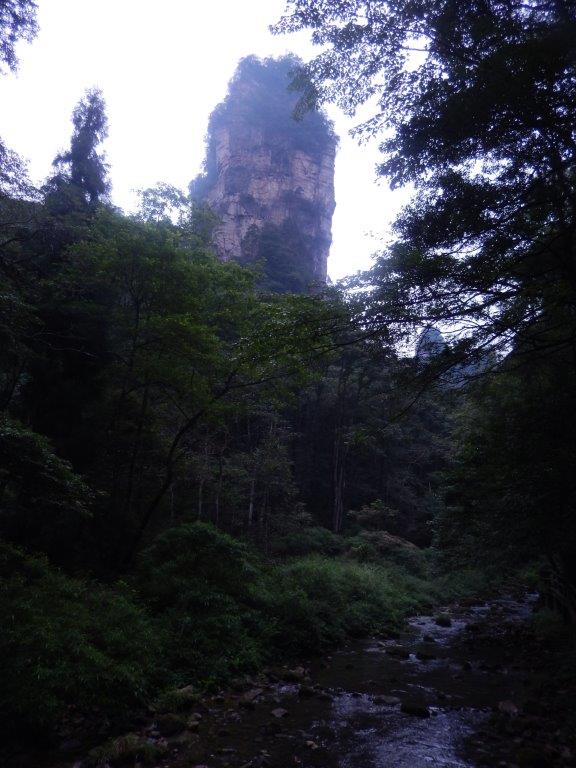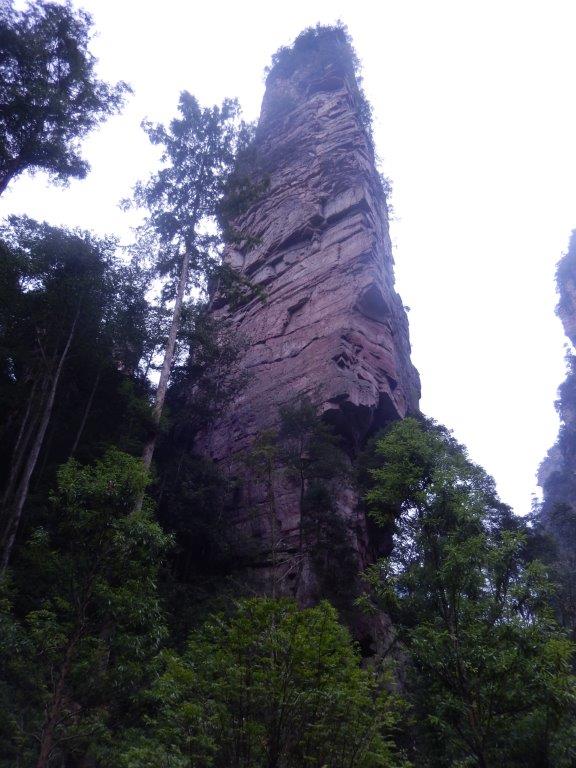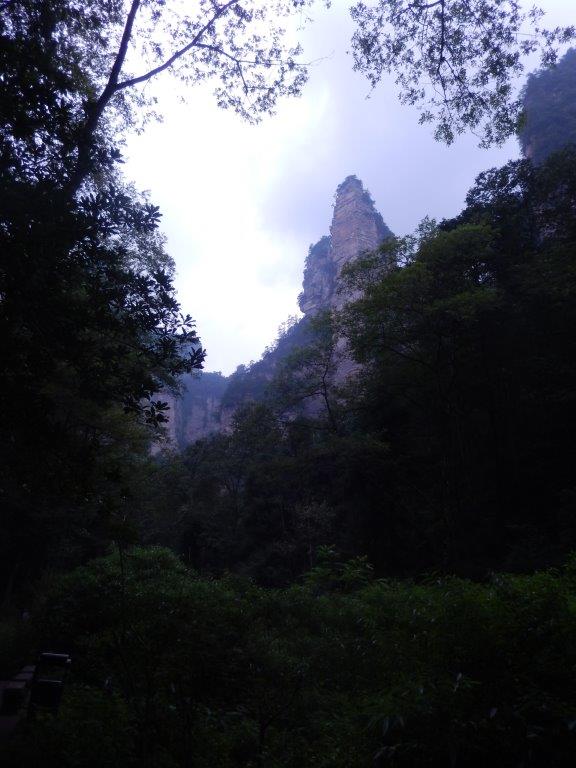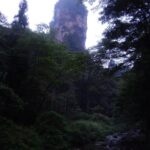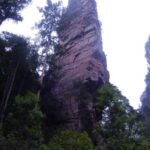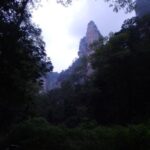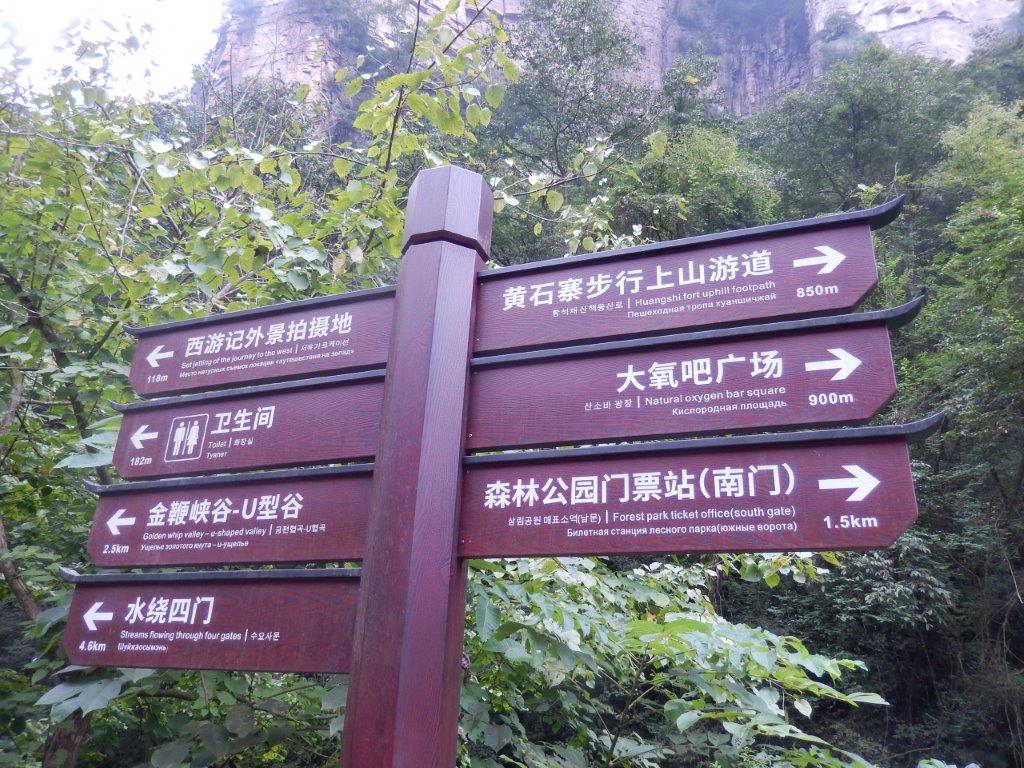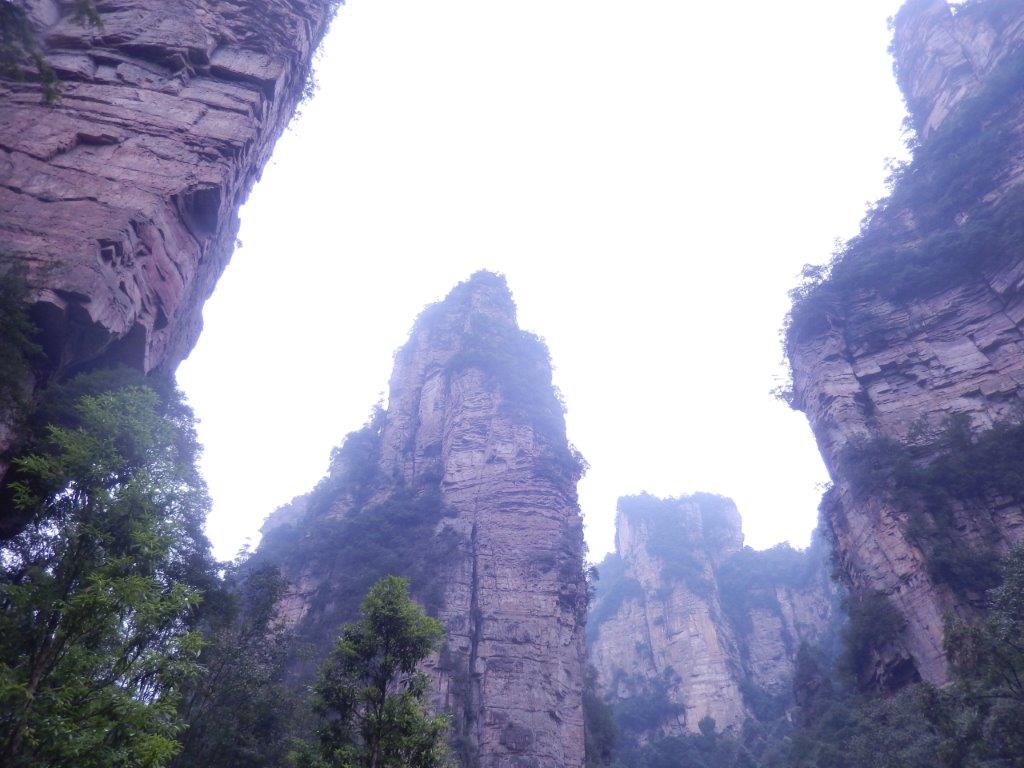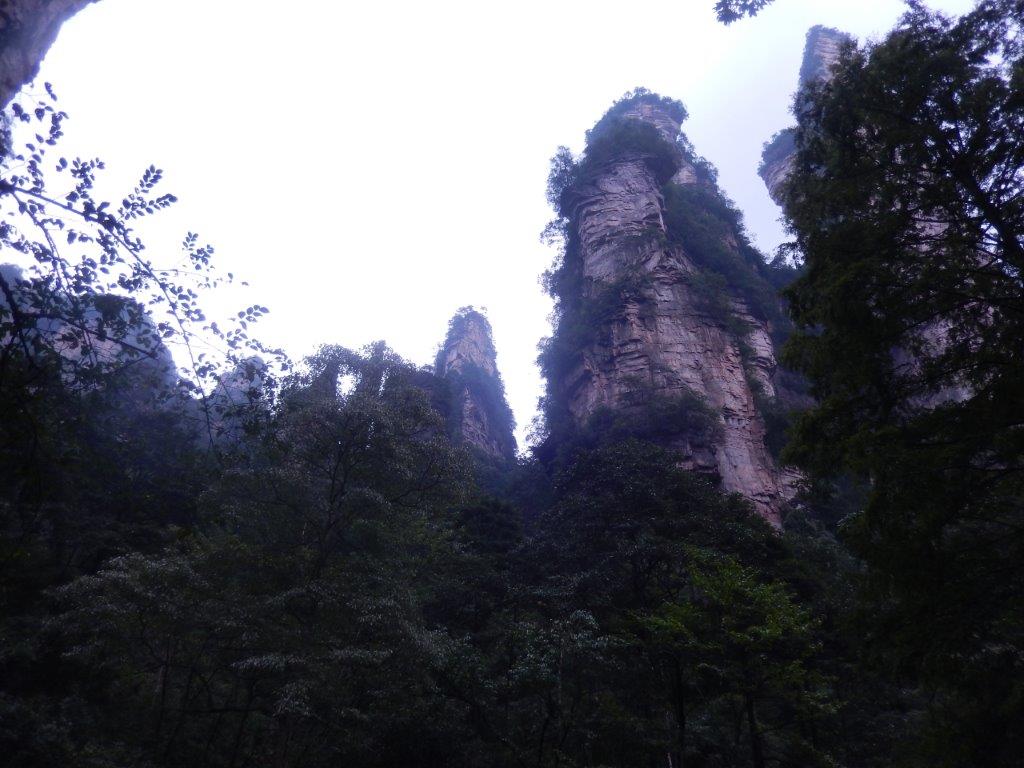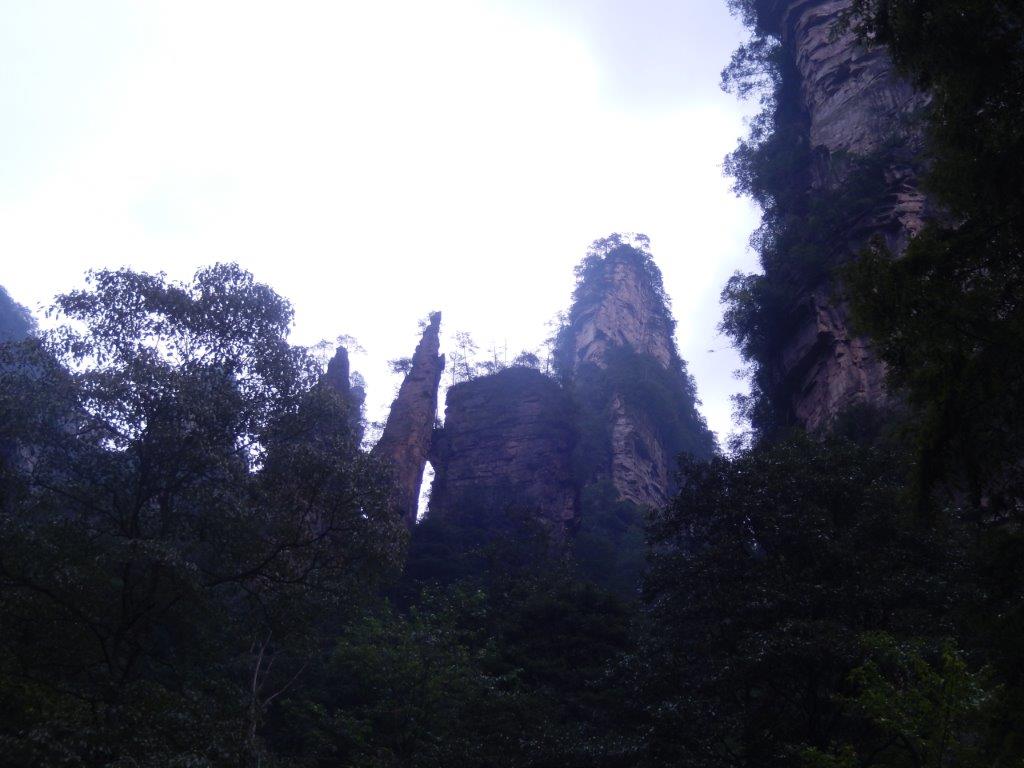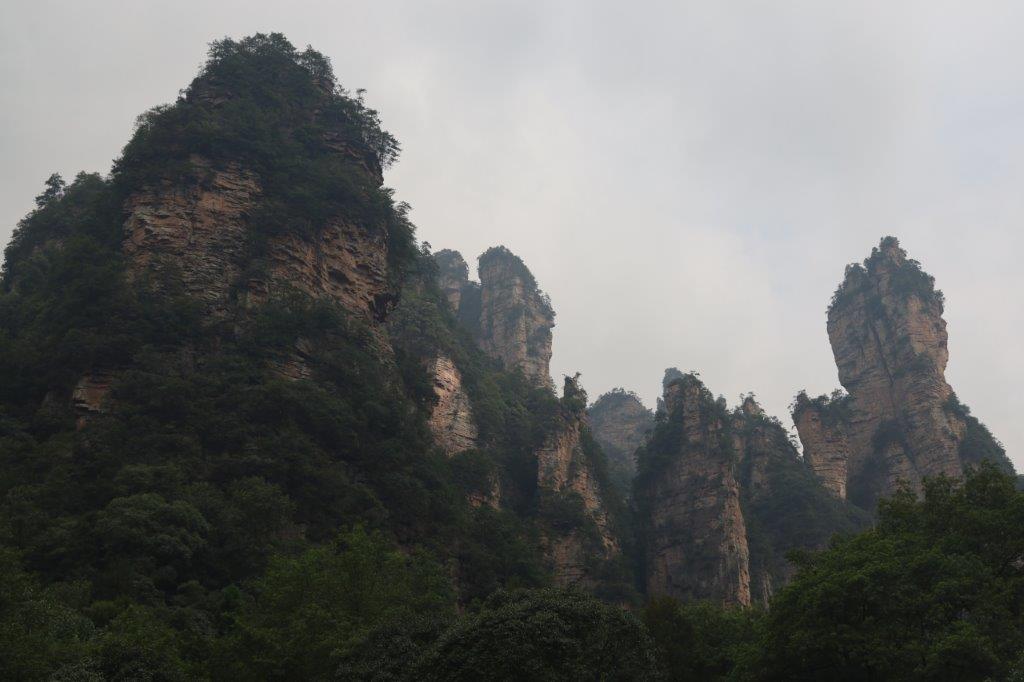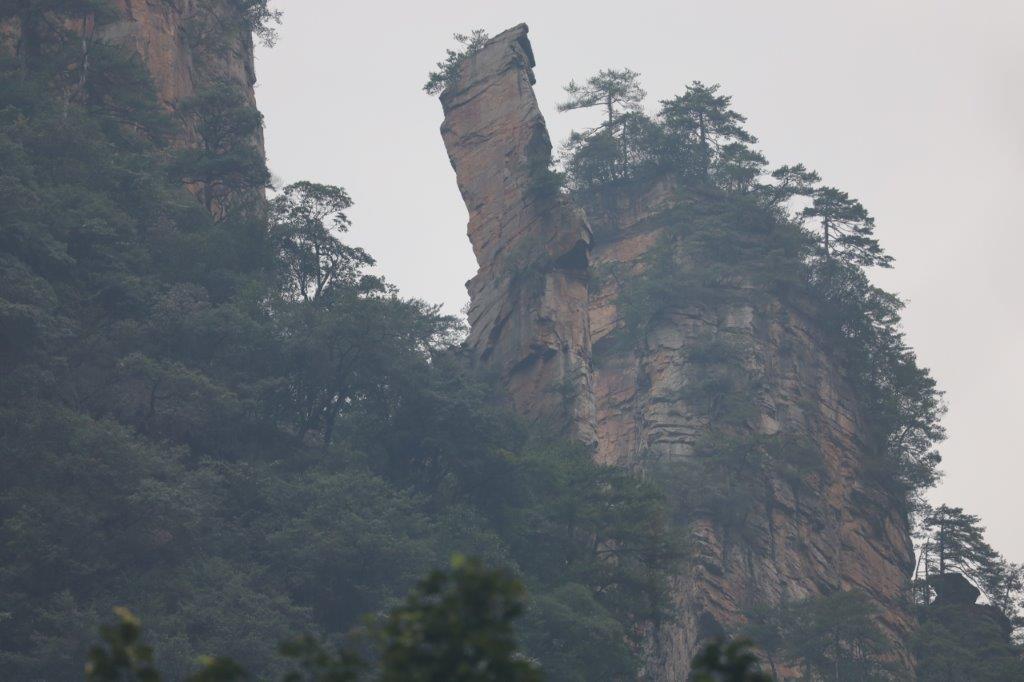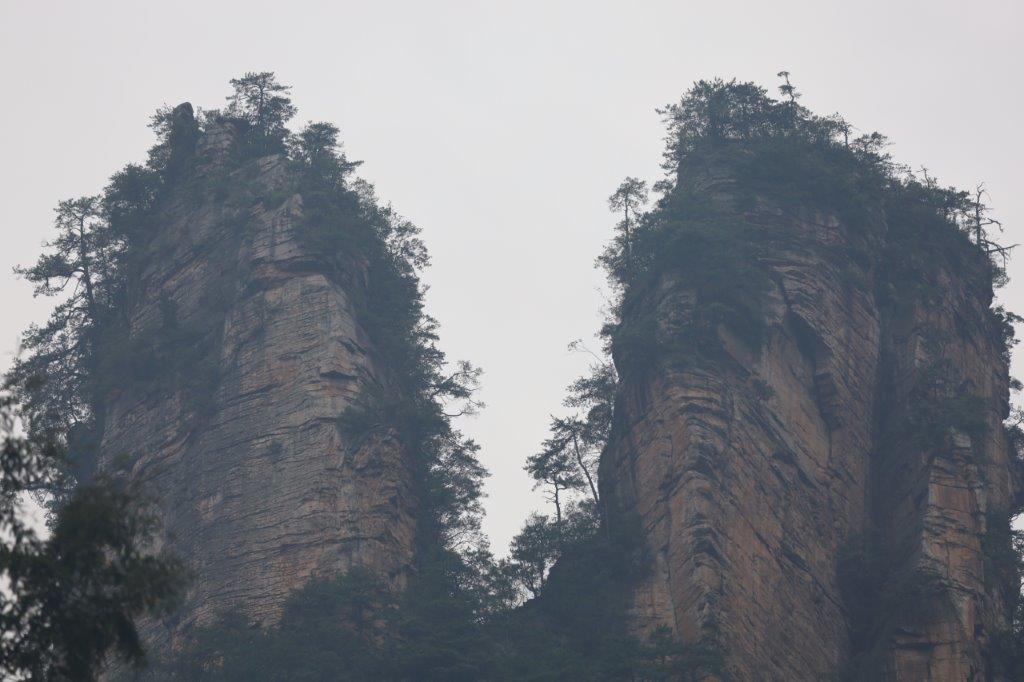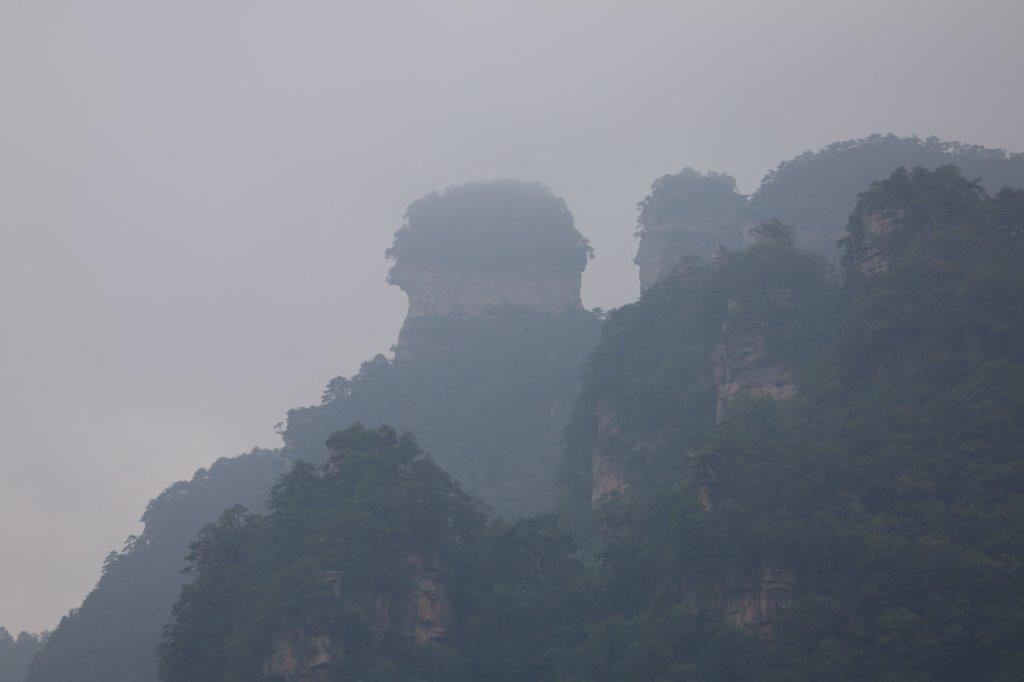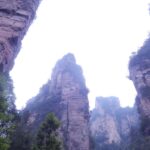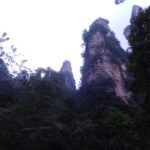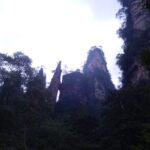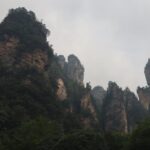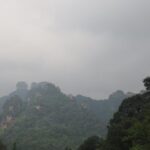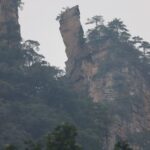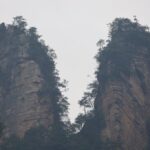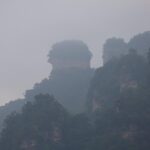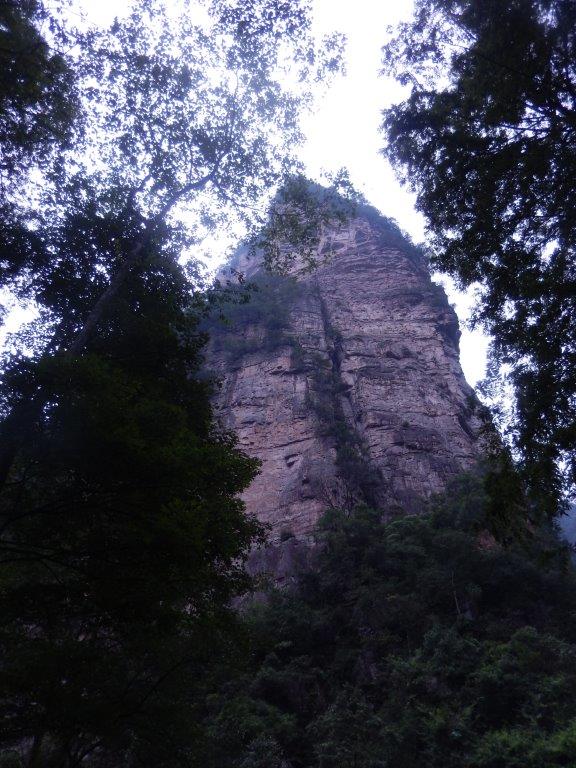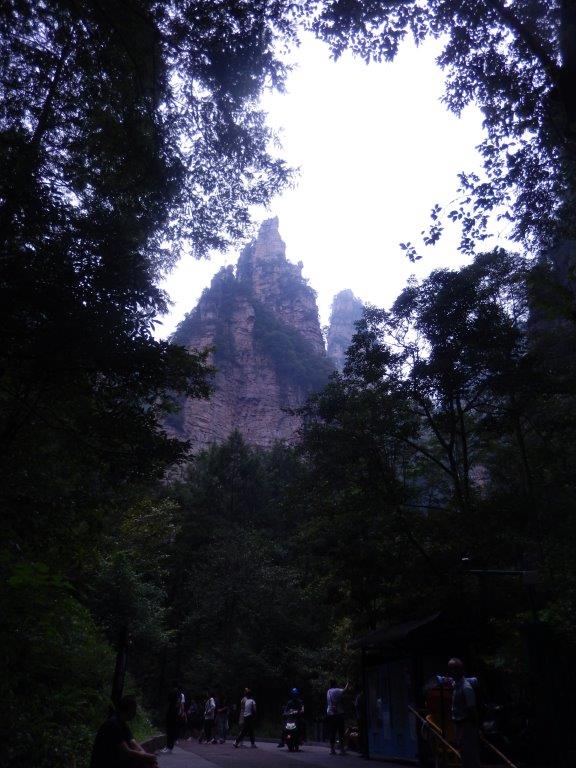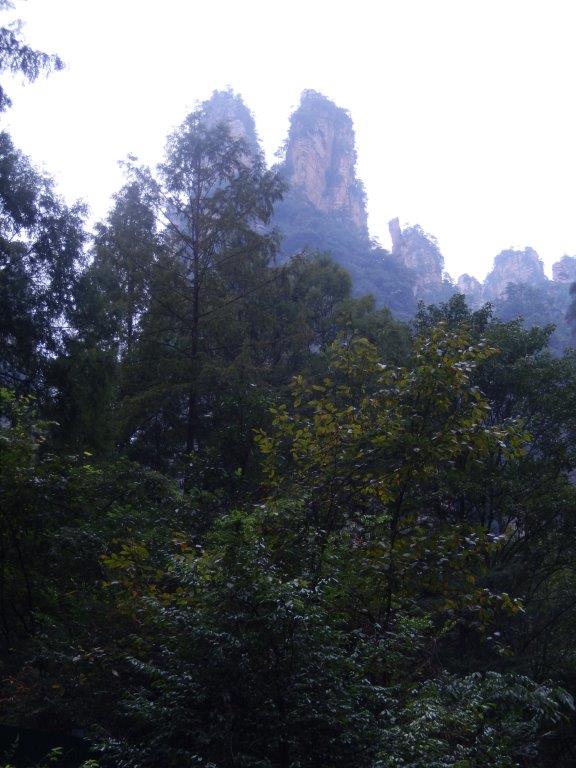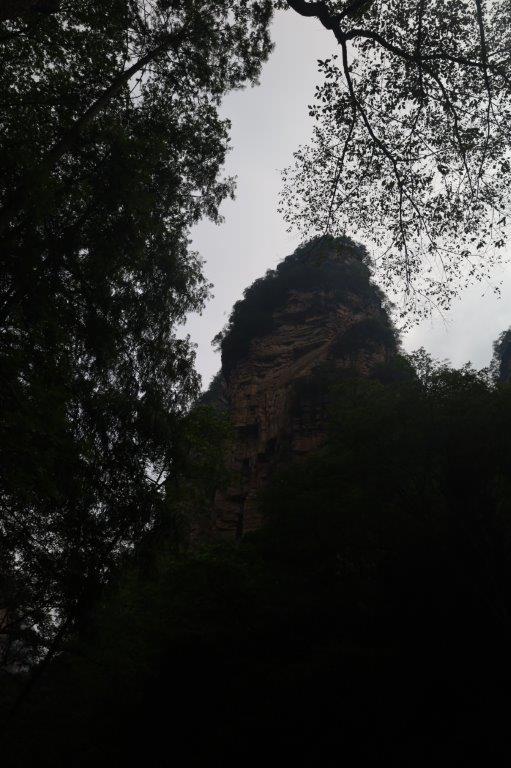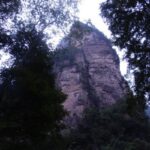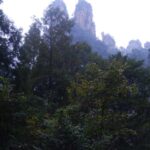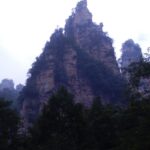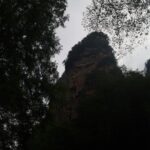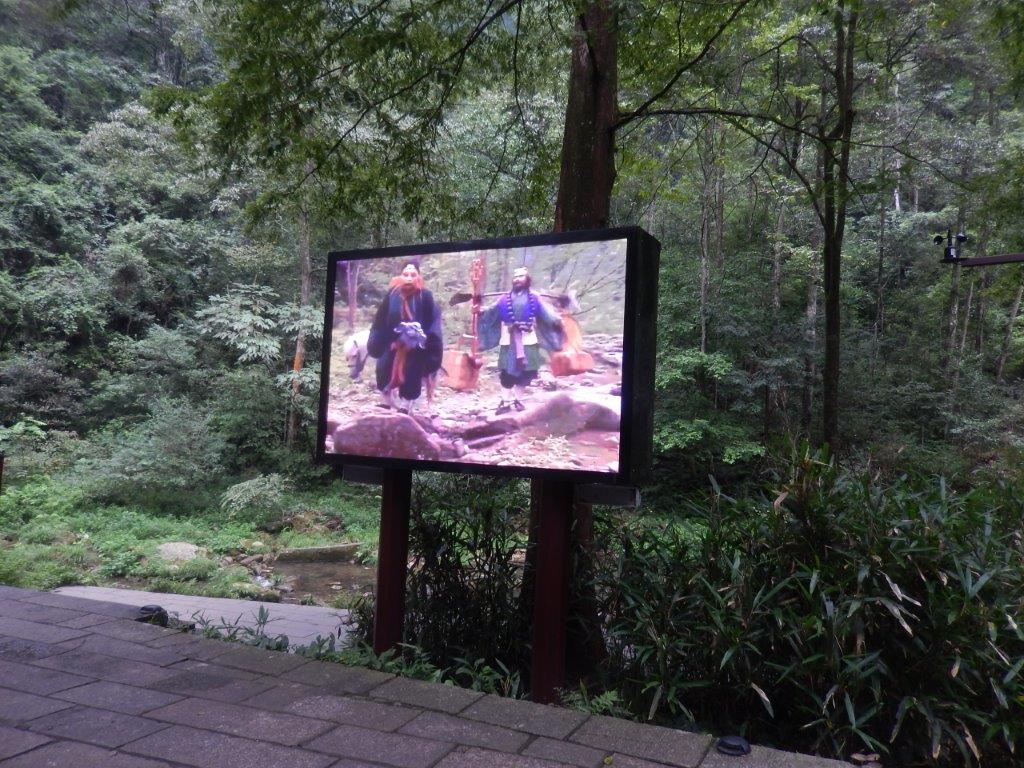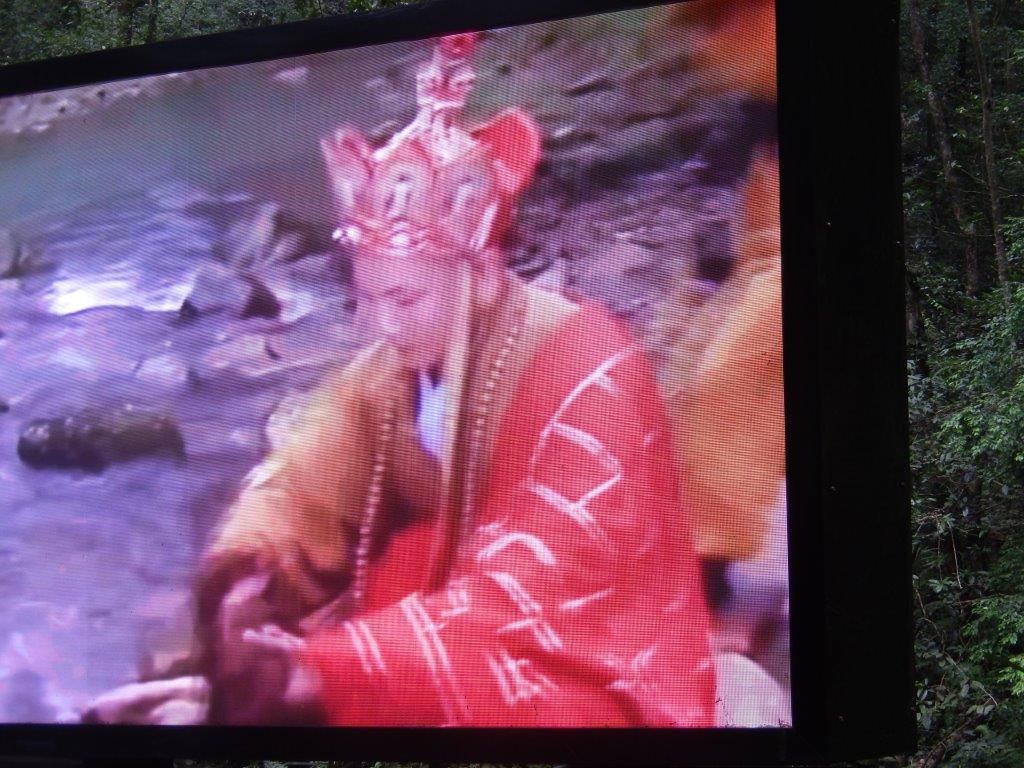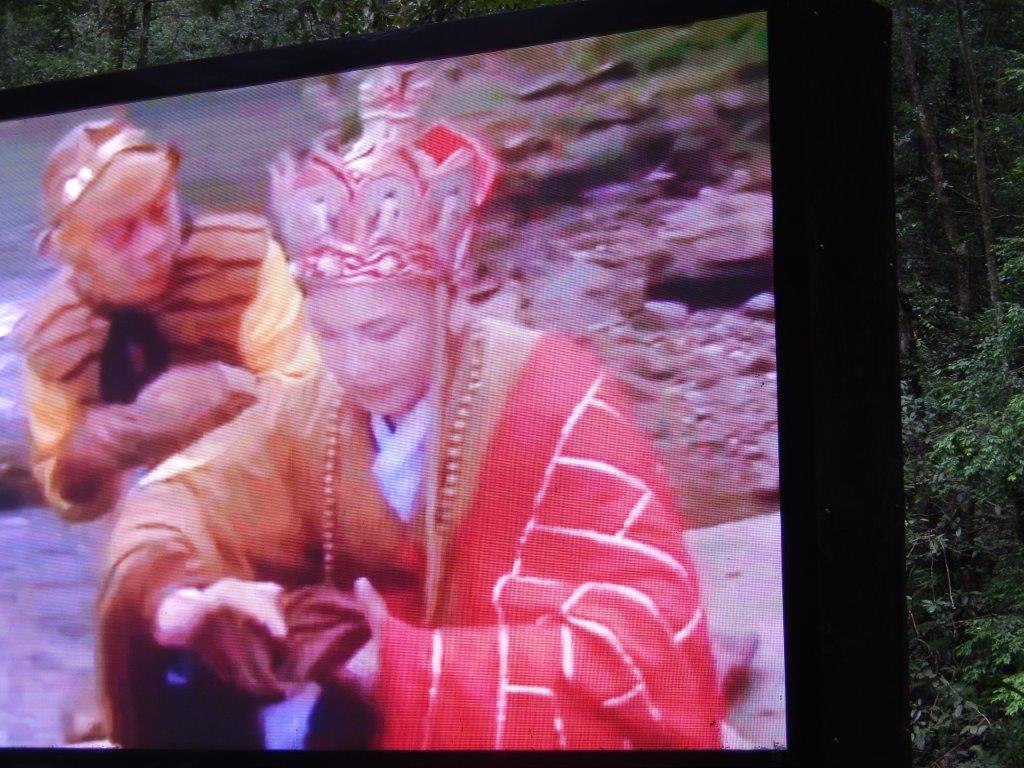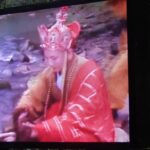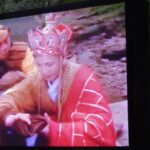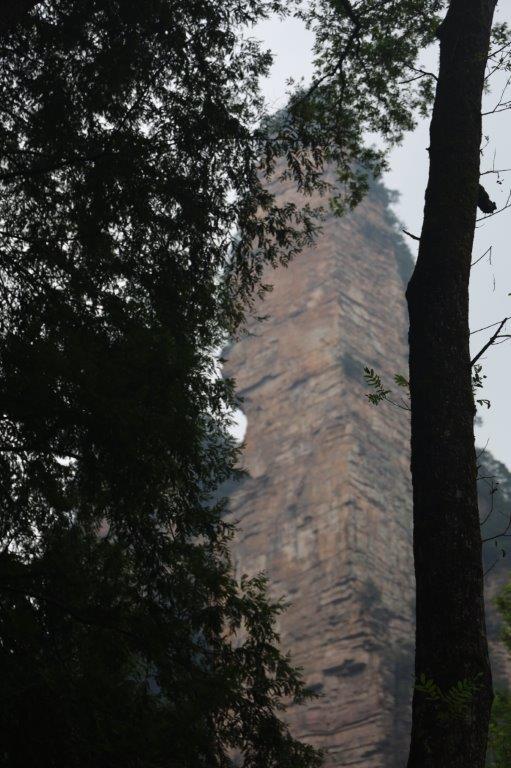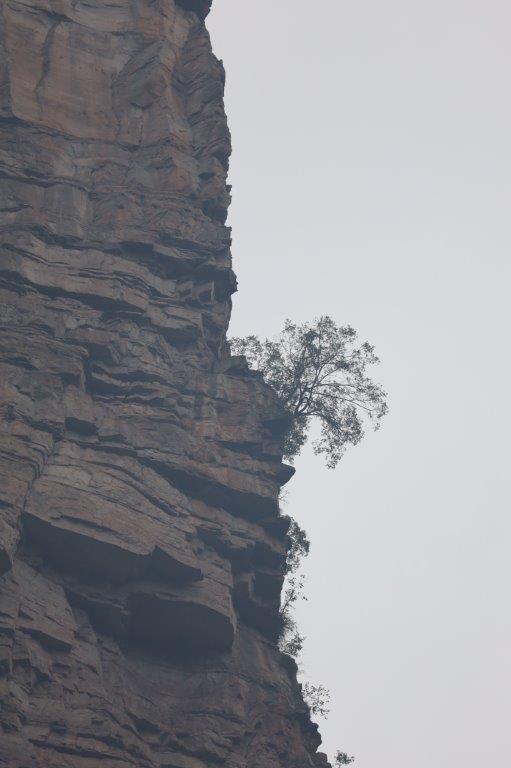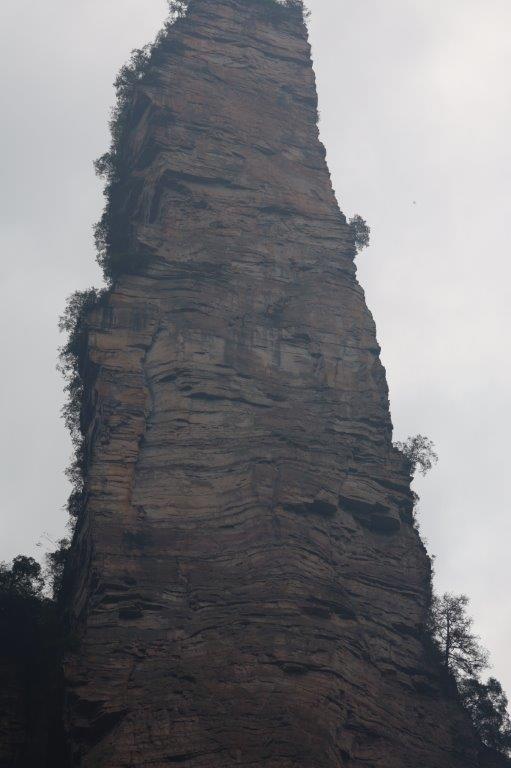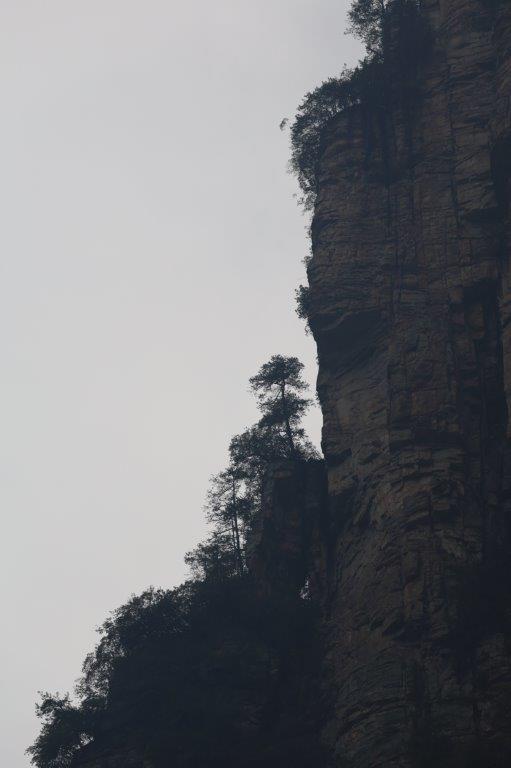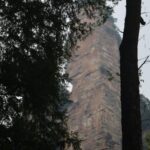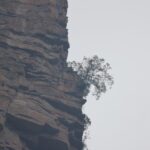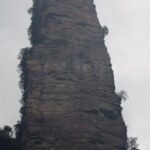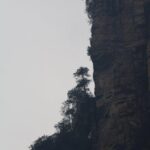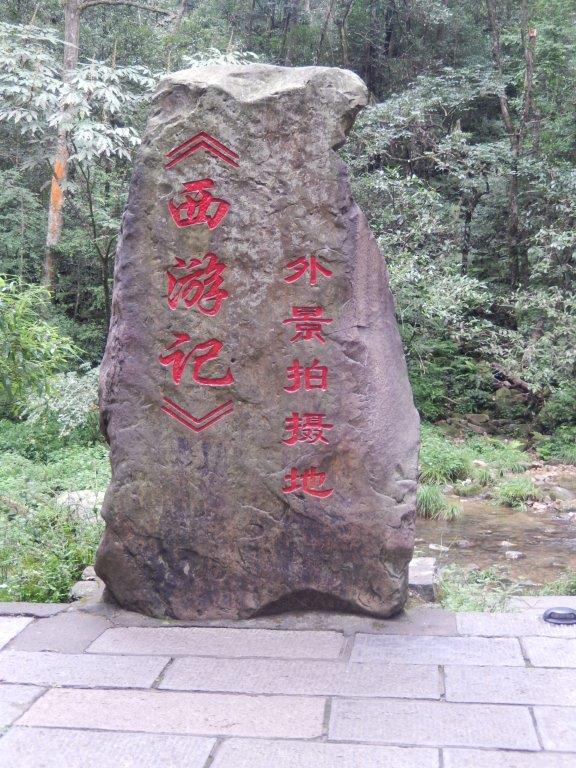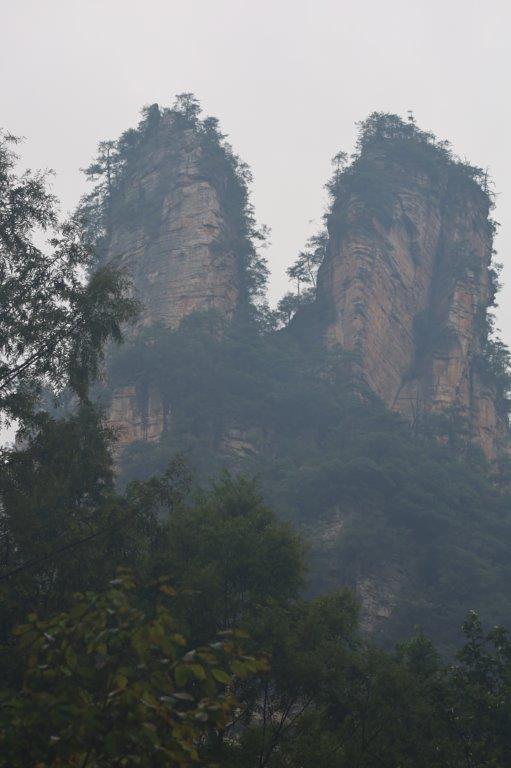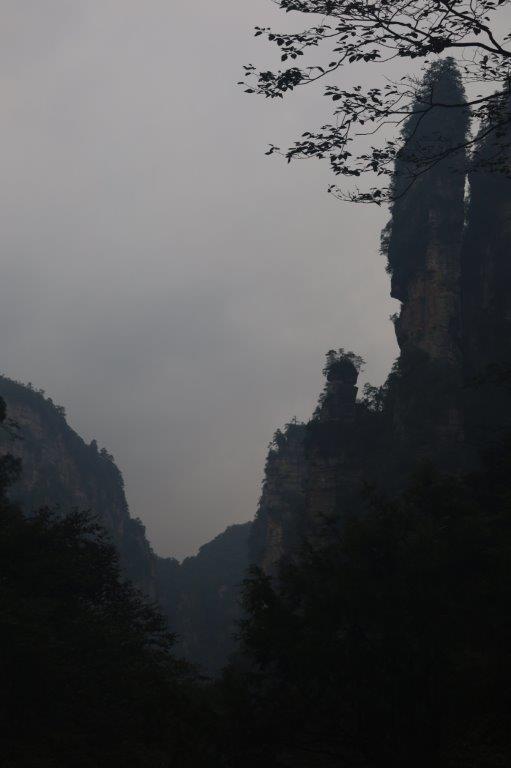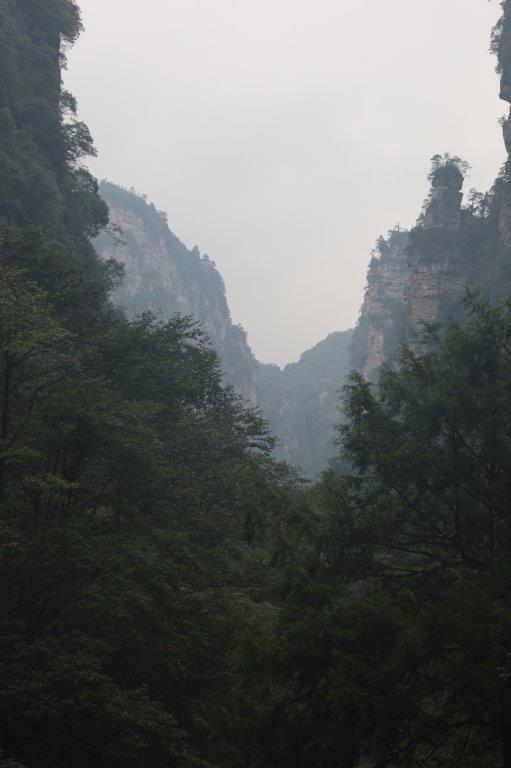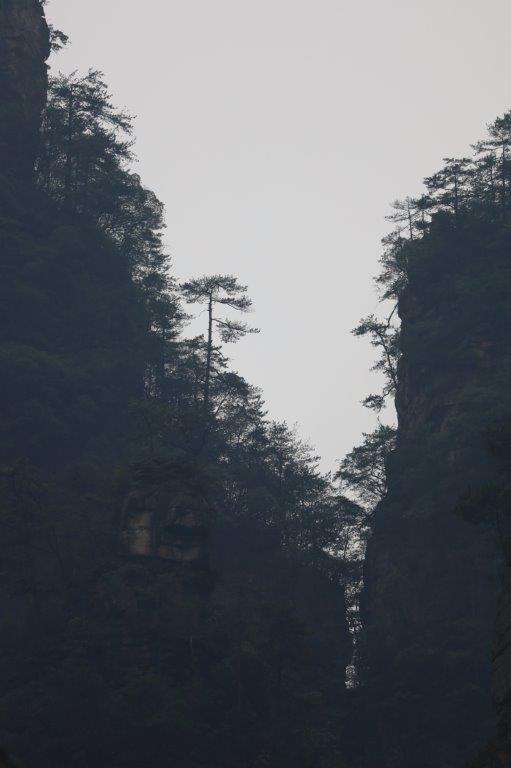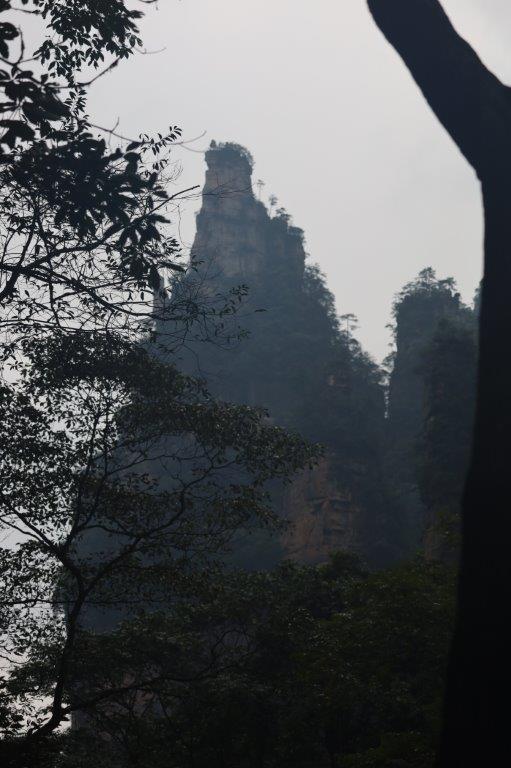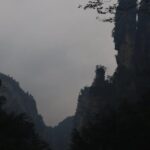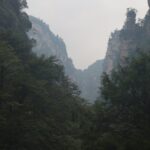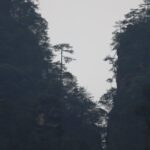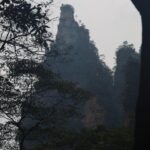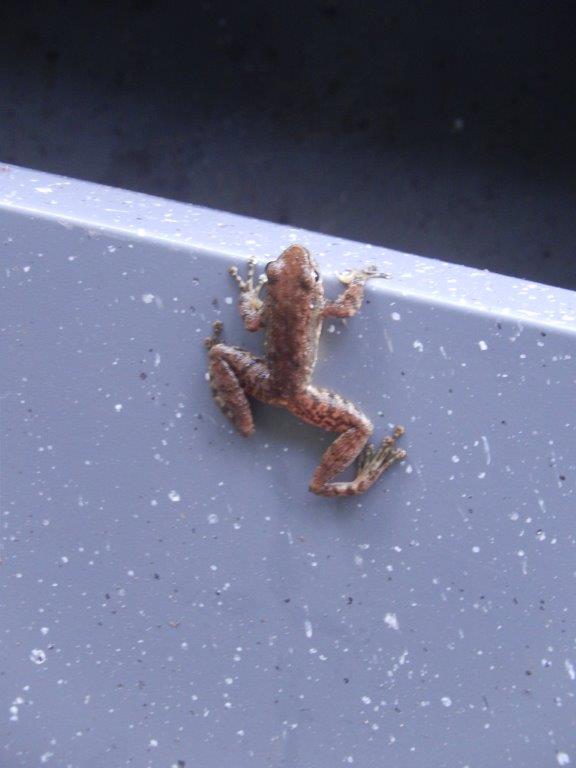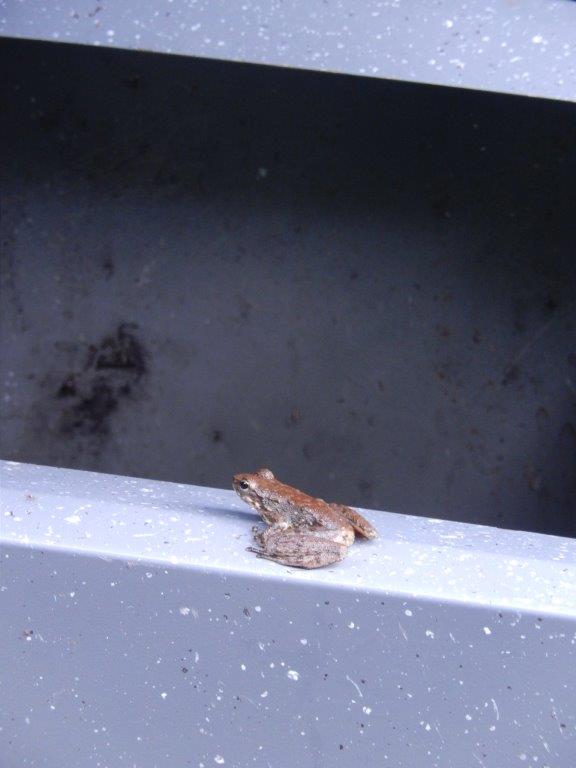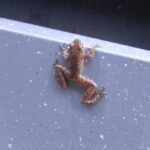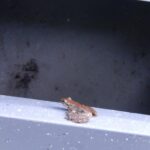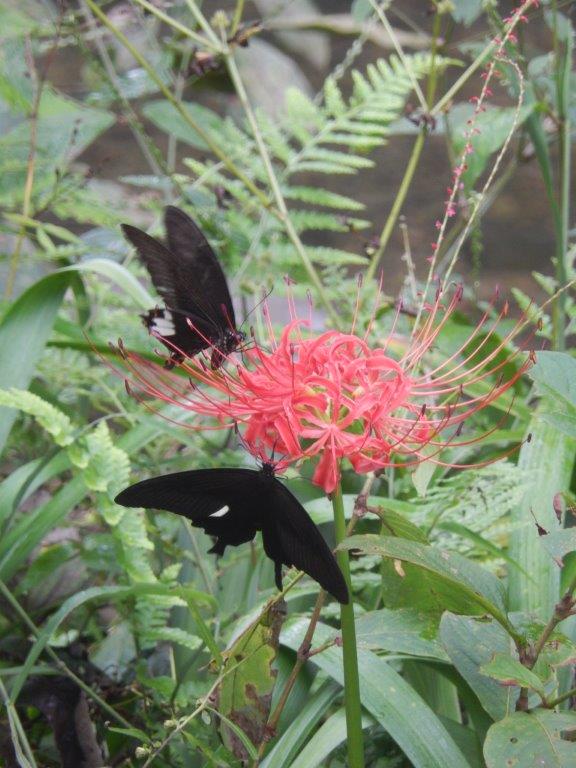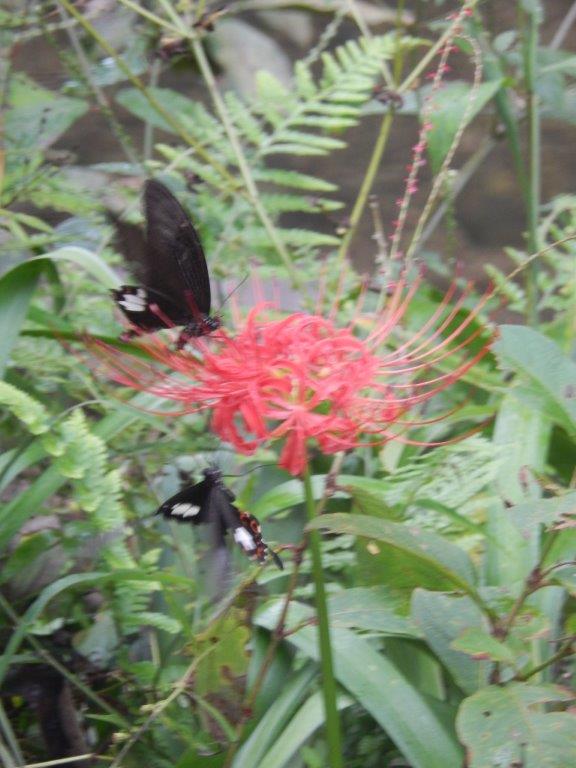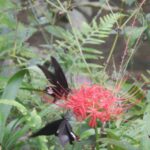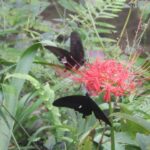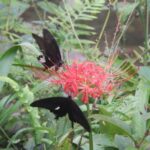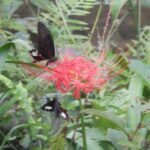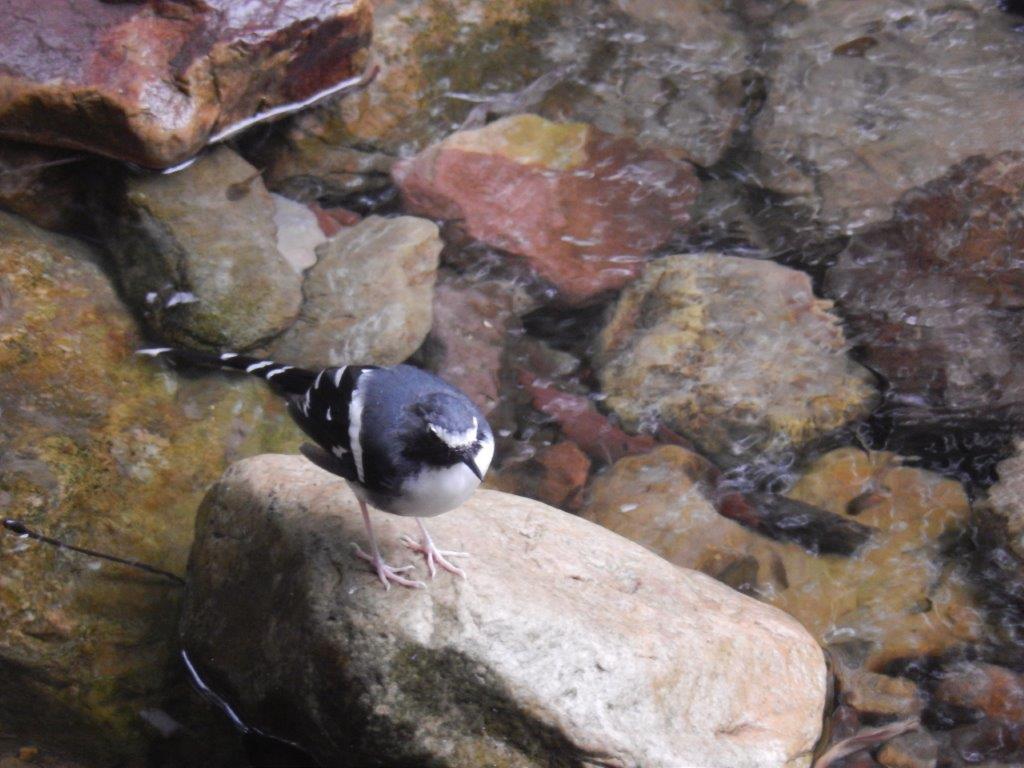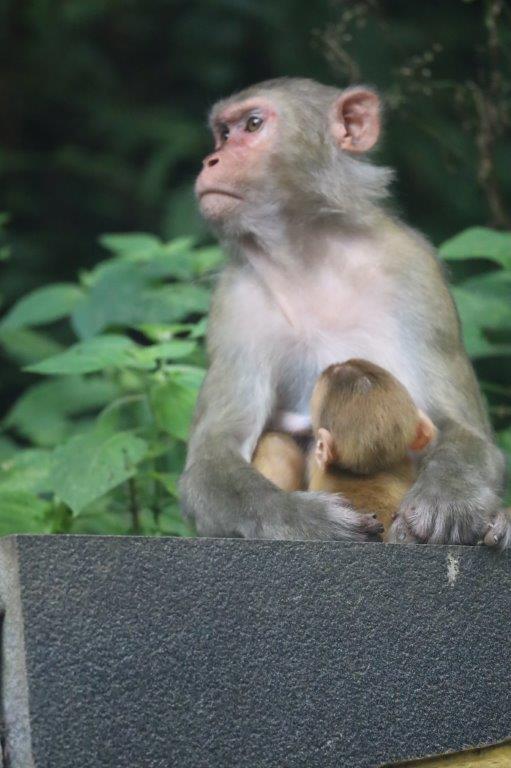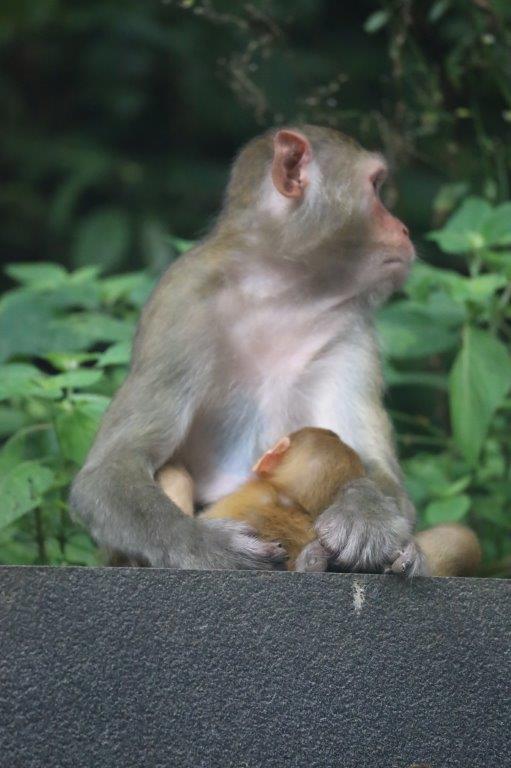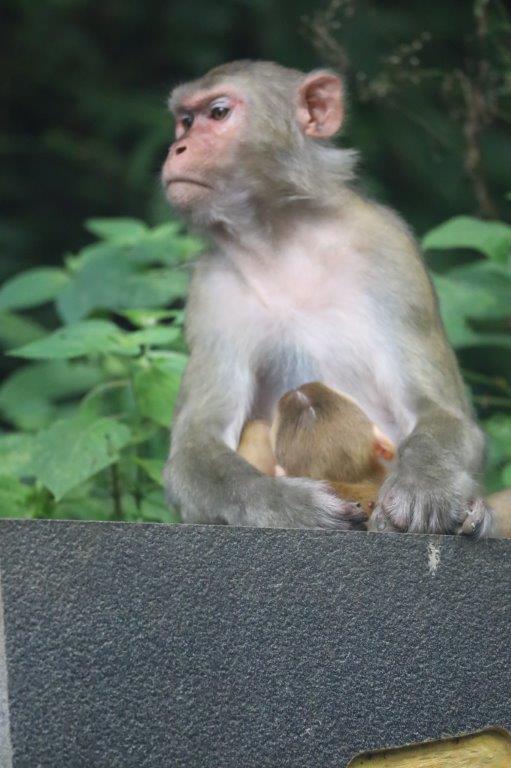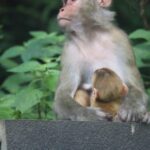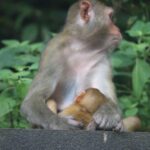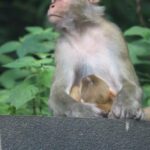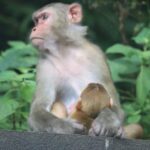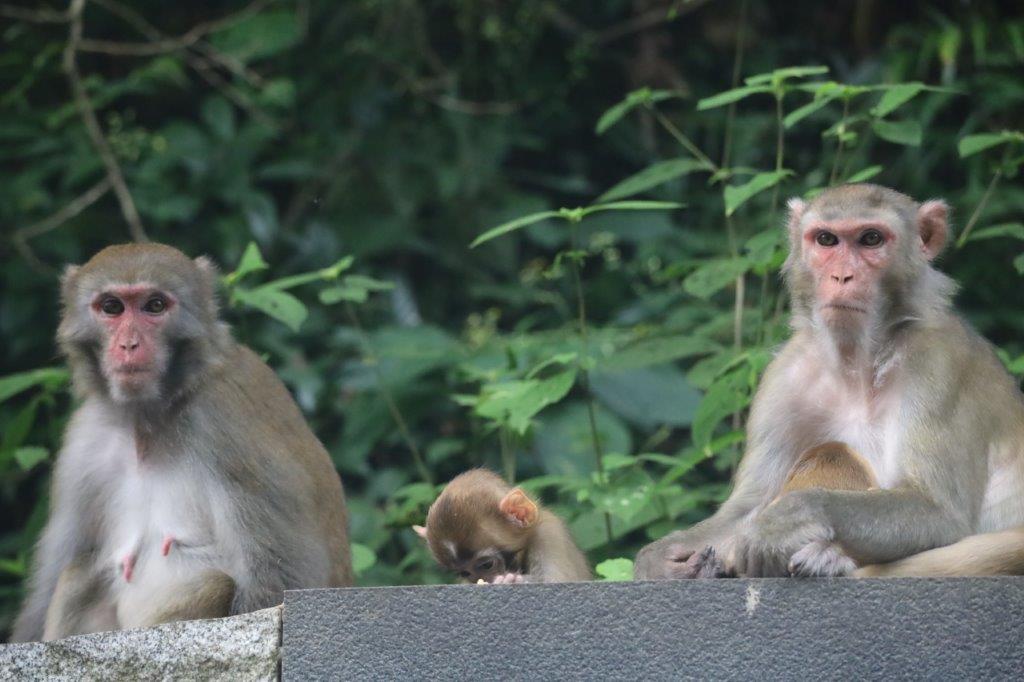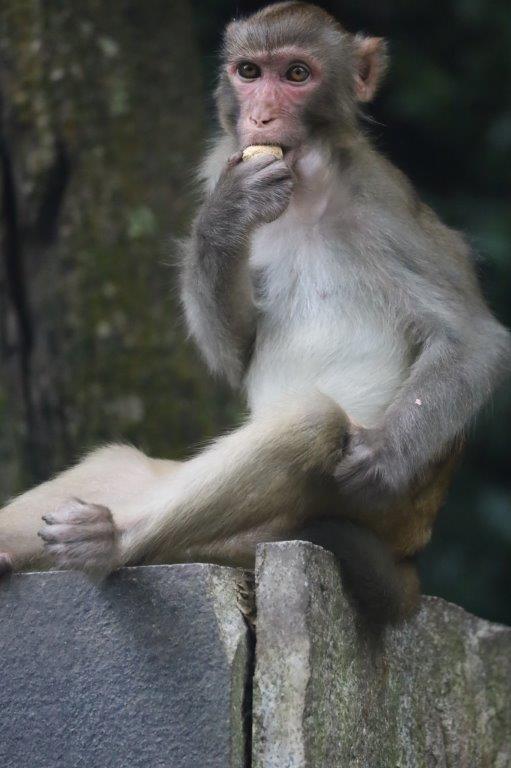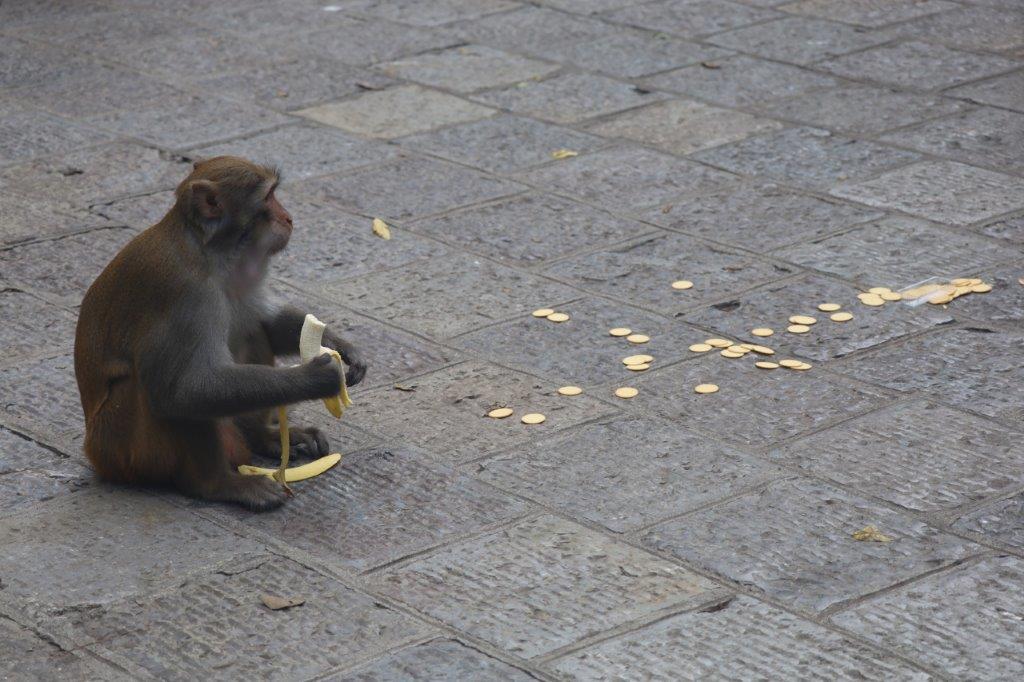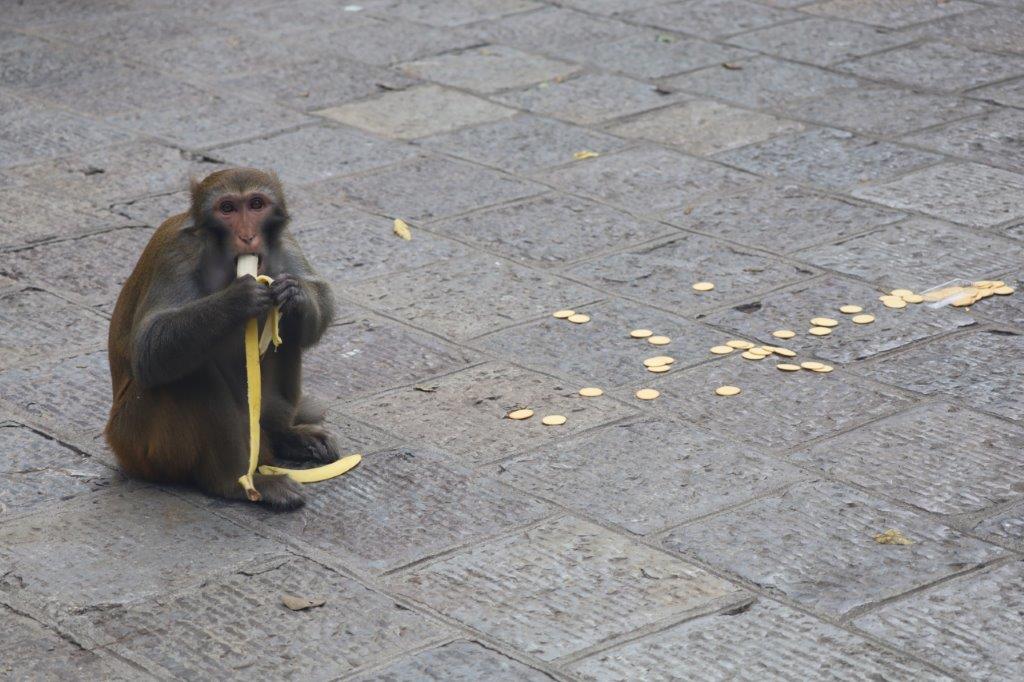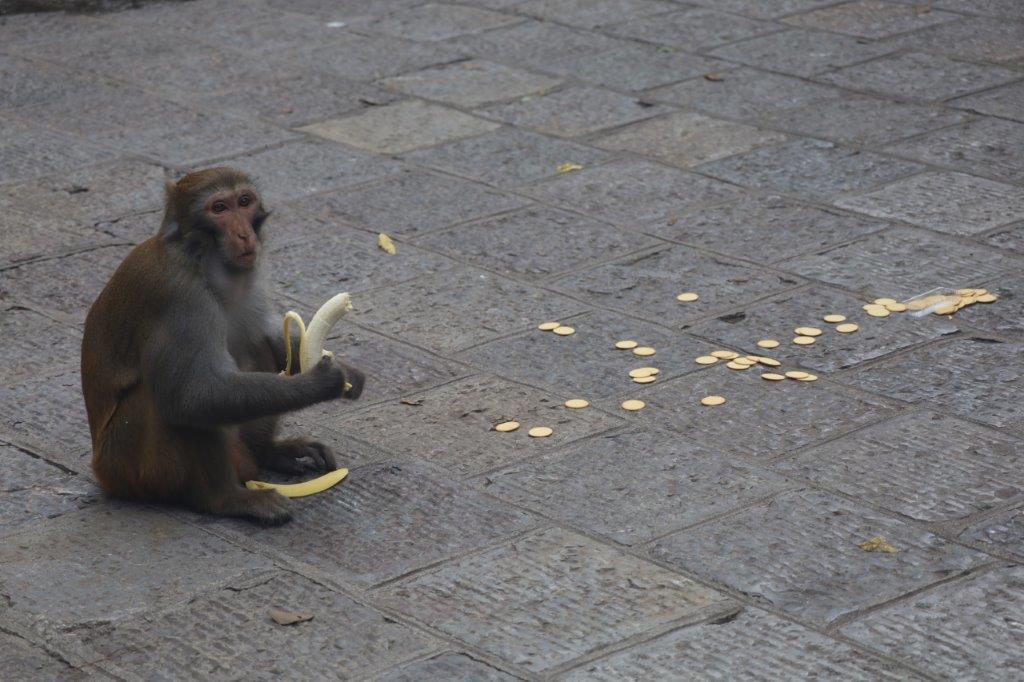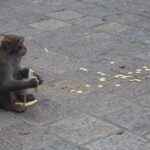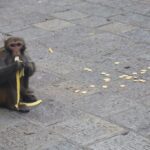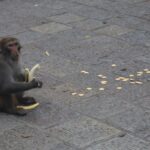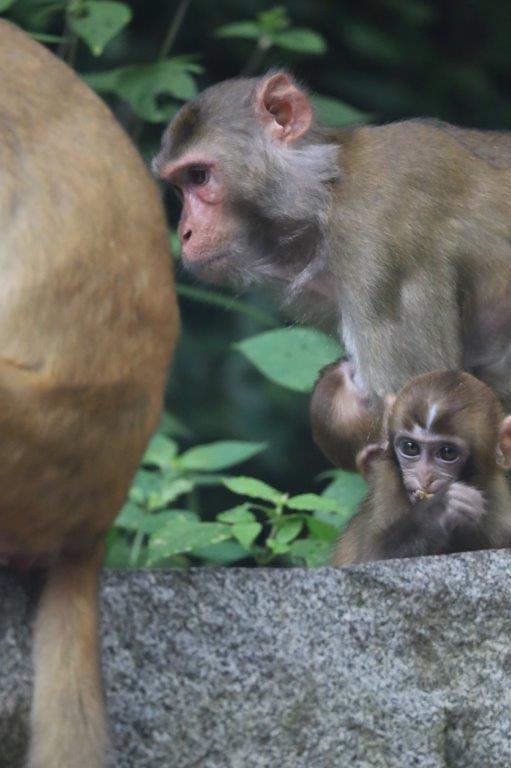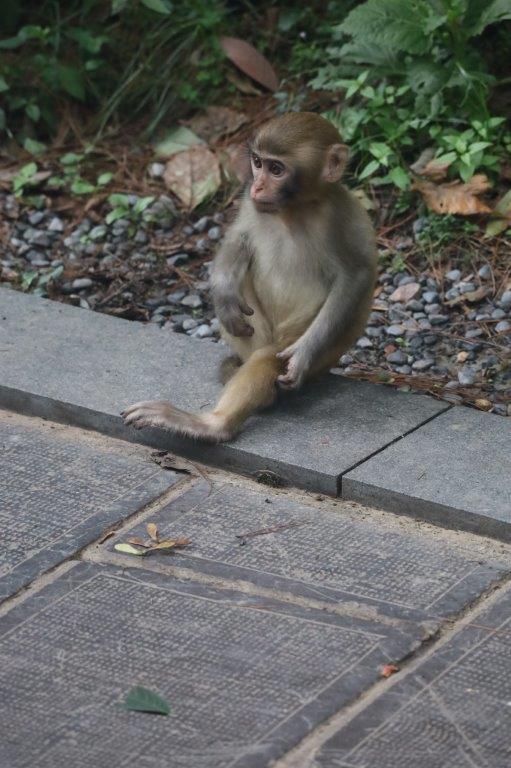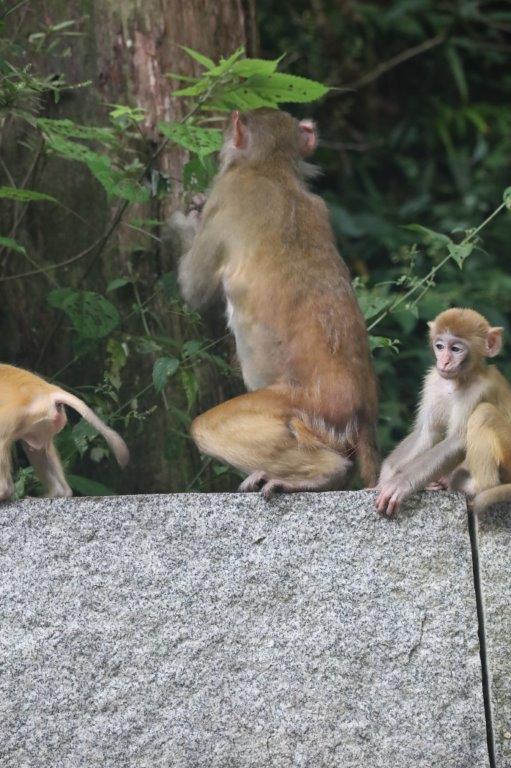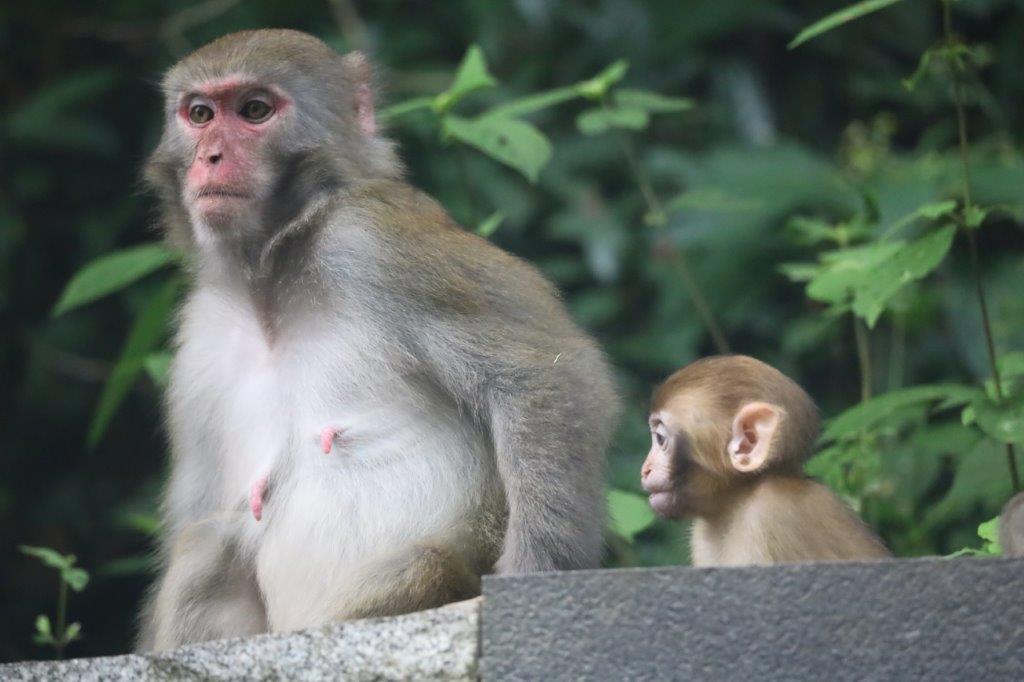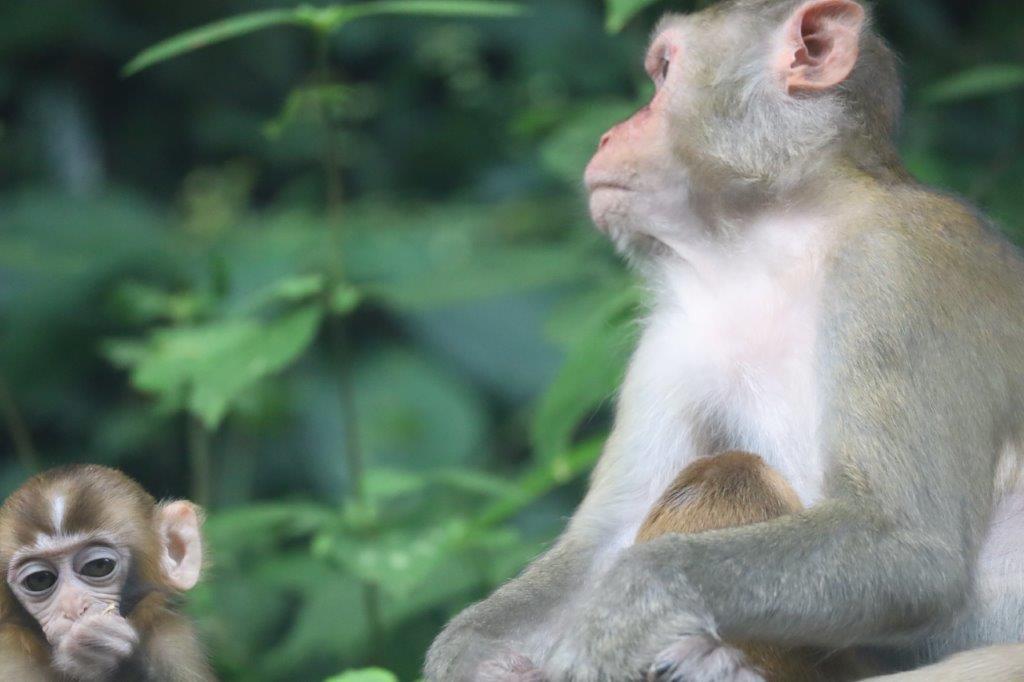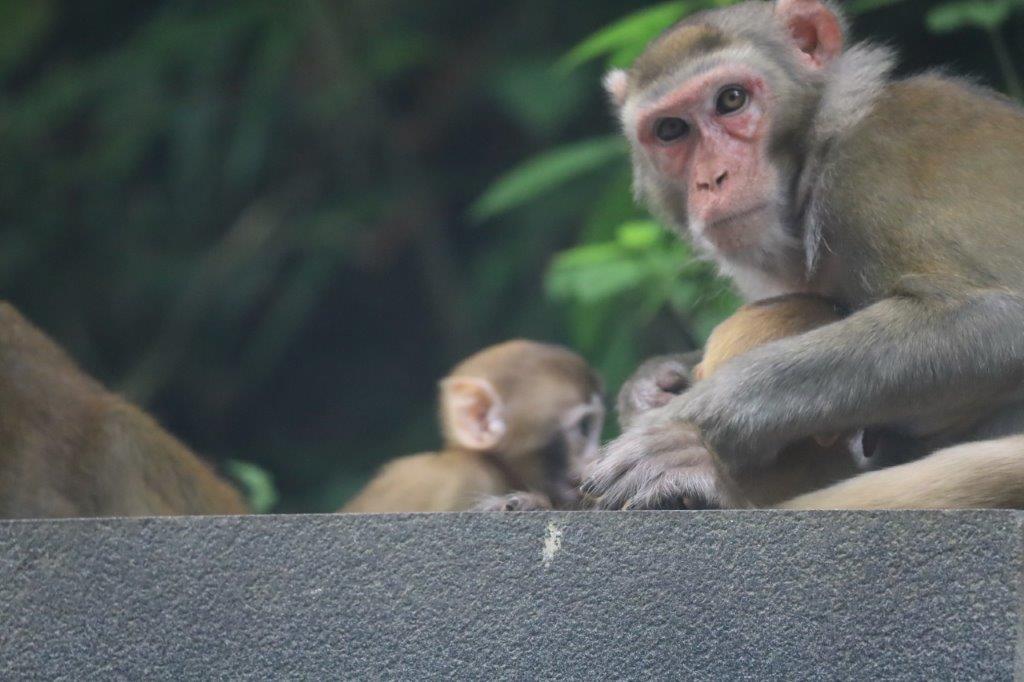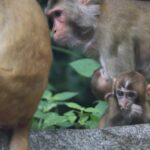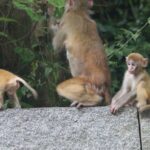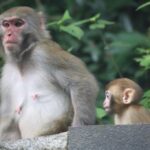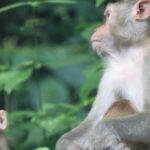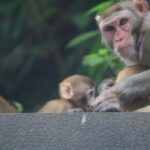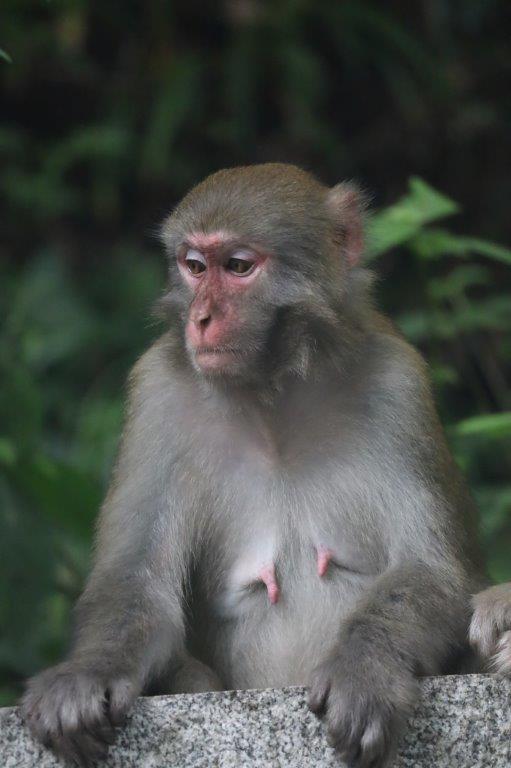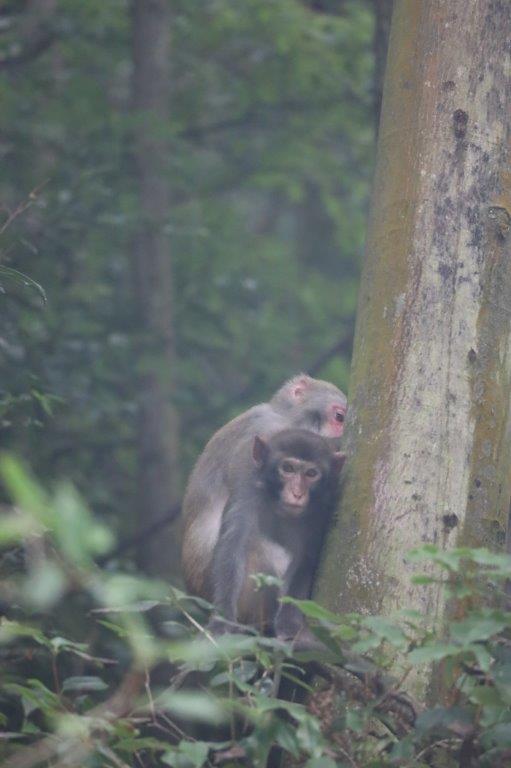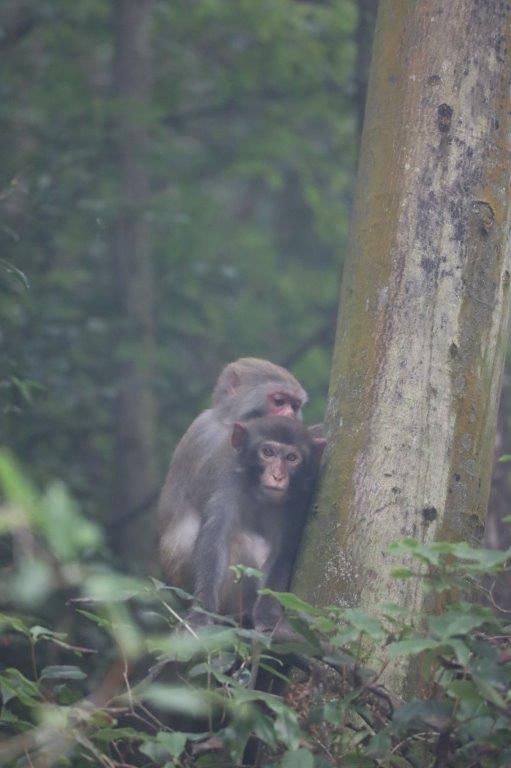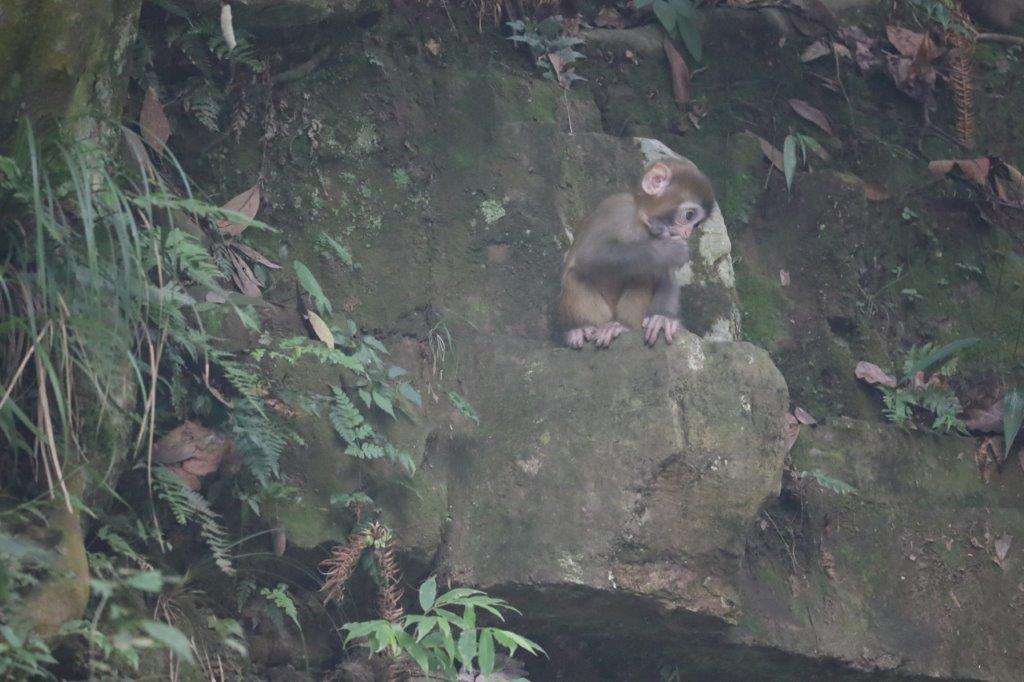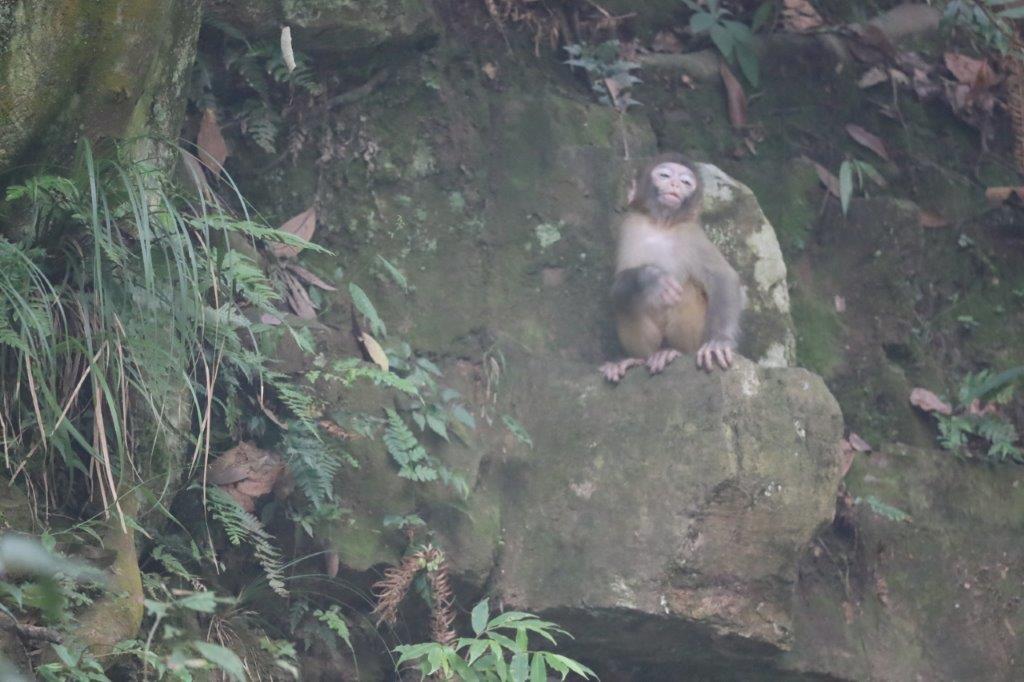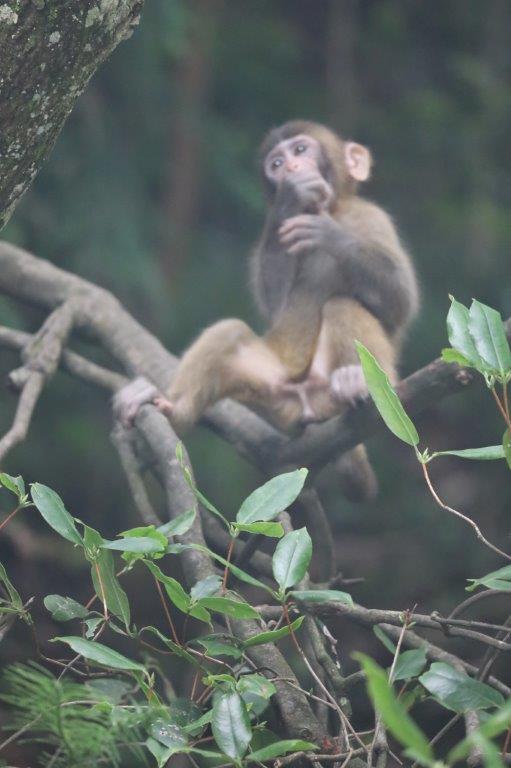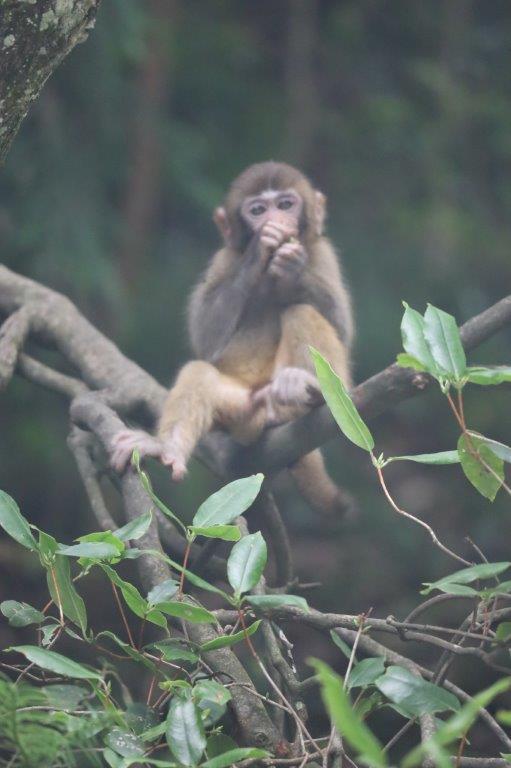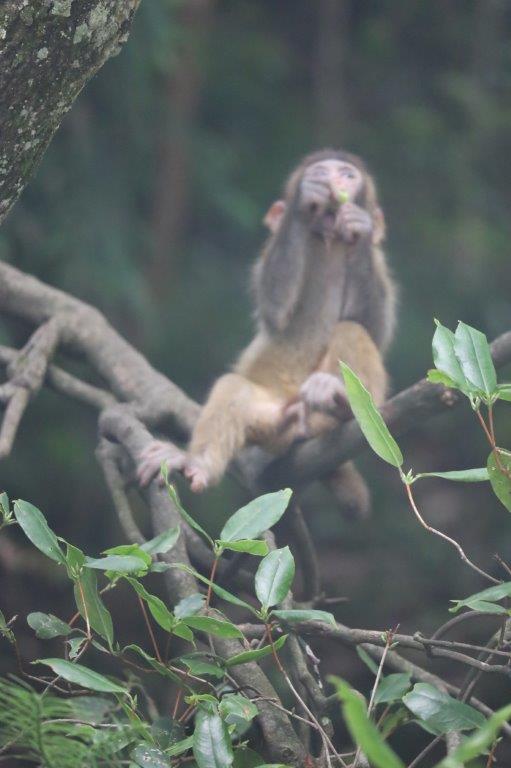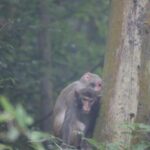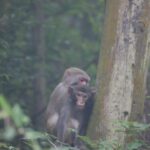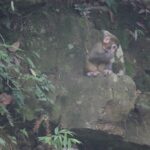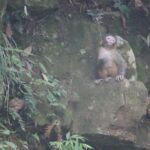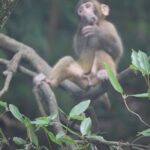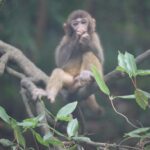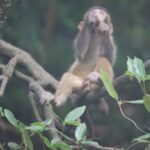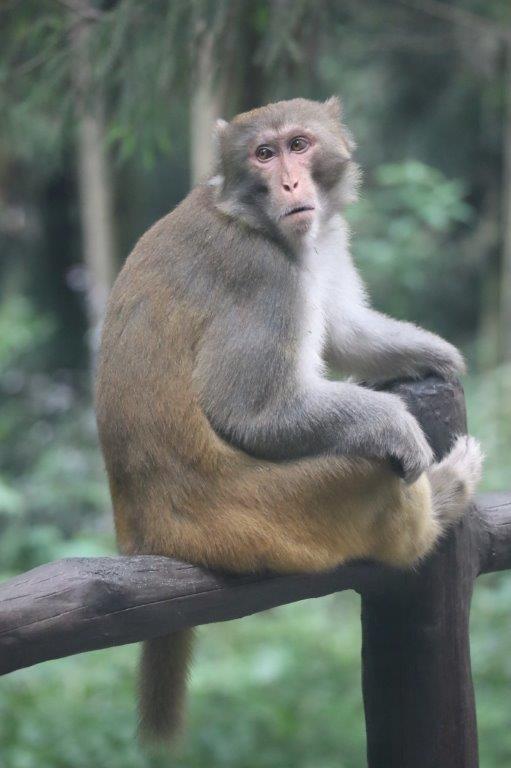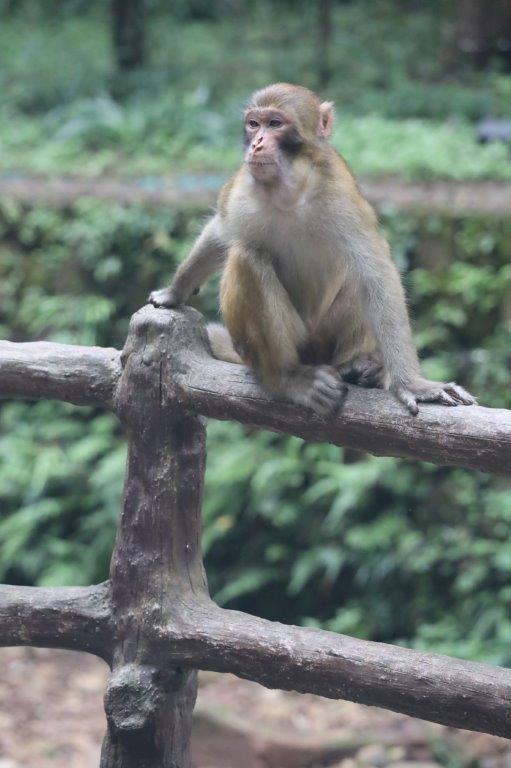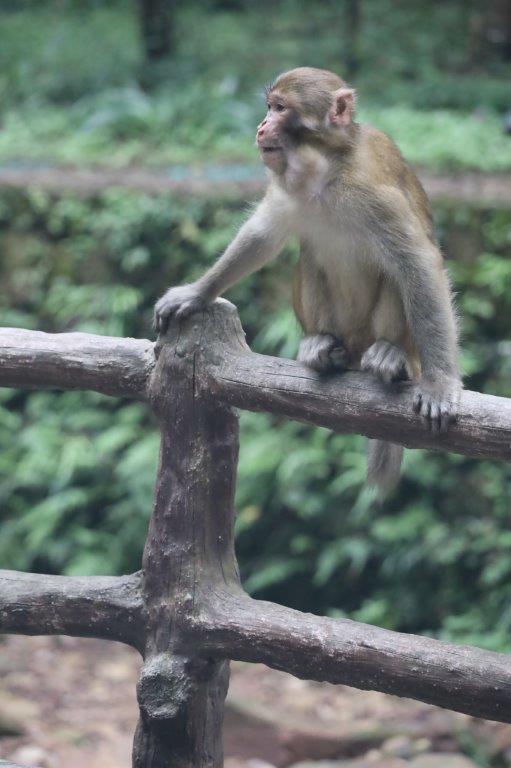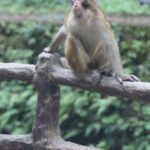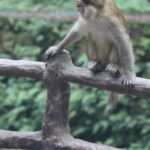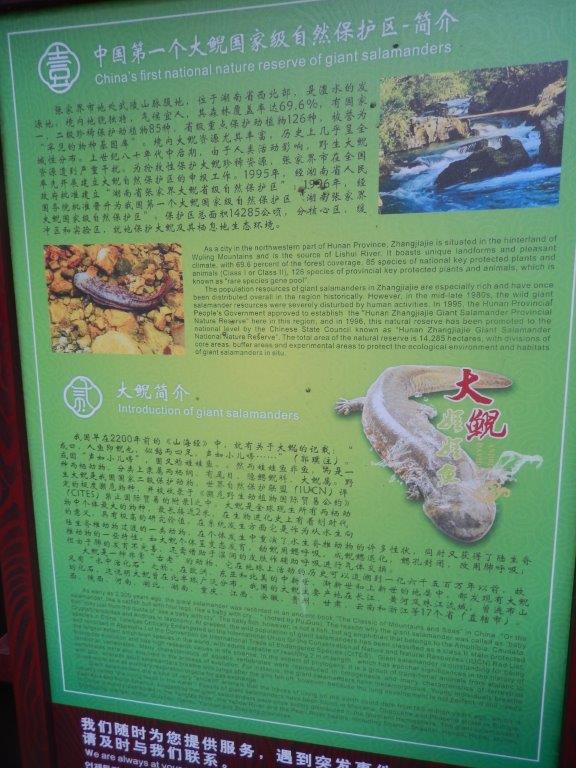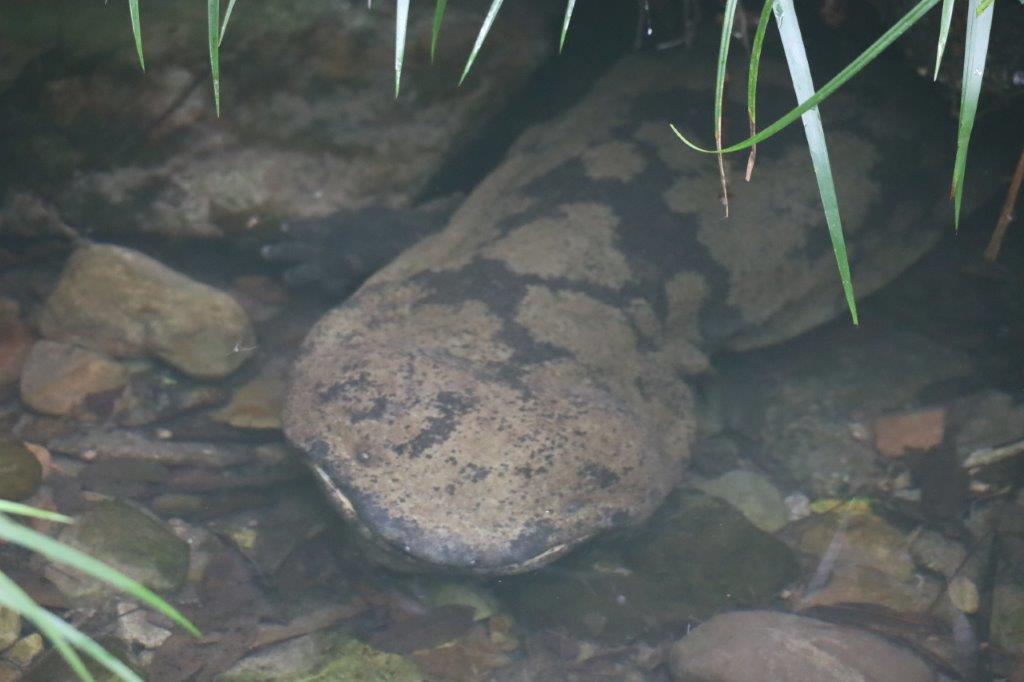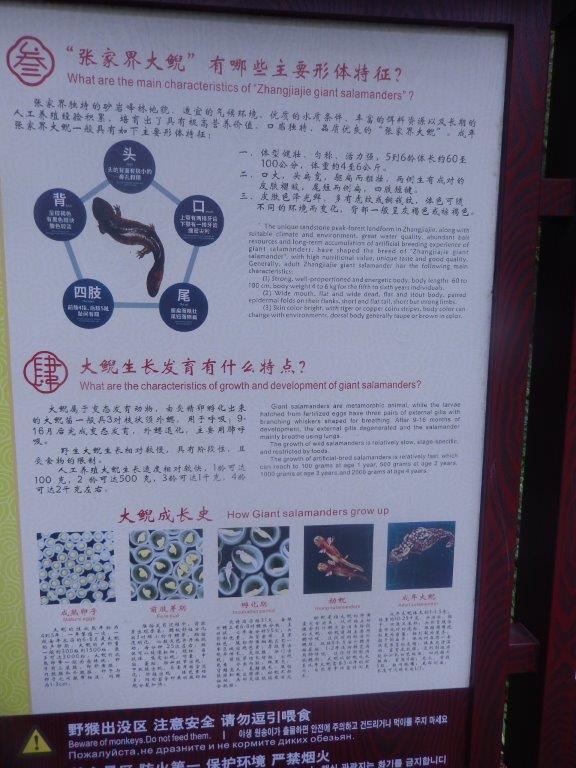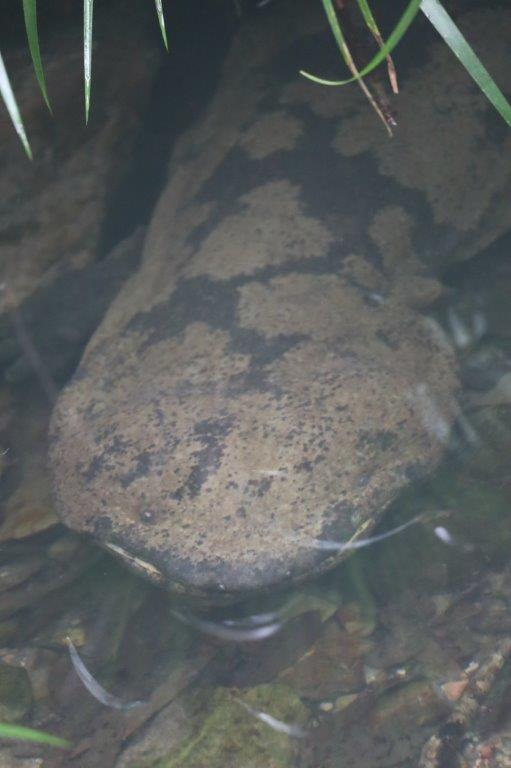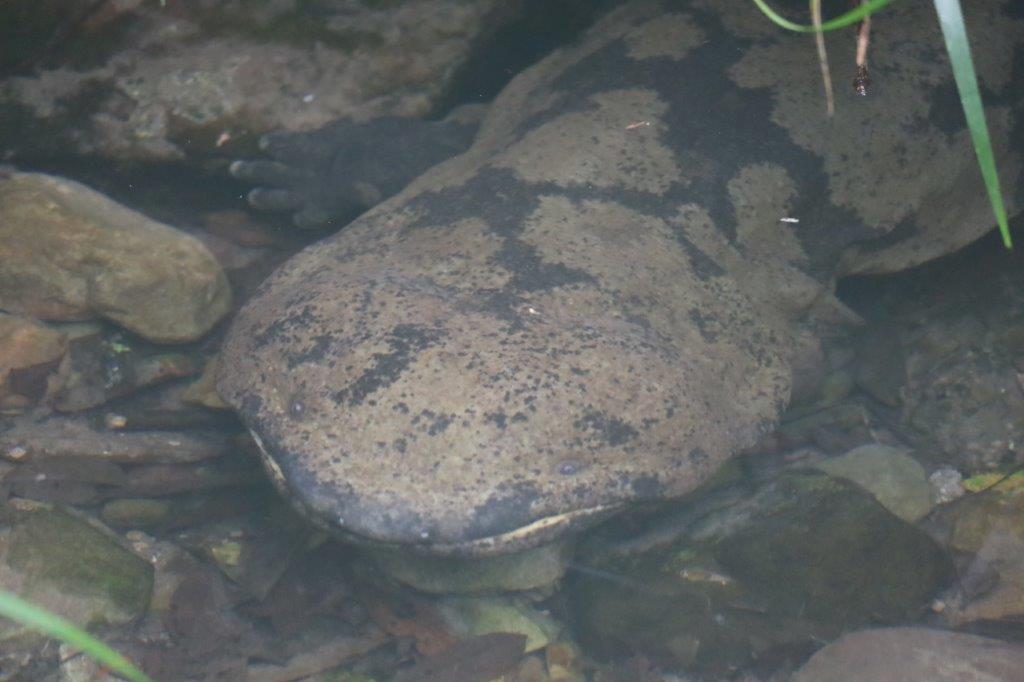19. China/Hunan: The Golden Whip Stream (Walk 3) (Zhangjiajie National Forest Park)
The Wandelgek had a quick shower and an early breakfast before checking out from his hotel in Wulingyuan Village, after which he was picked up by his local guide Gaby and his taxi driver. He then was driven to again a different part of the Zhangjiajie National Forest Park:

Map showing the different elevated areas accessible for visitors of the Zhangjiajie National Forest Park…
Here he started on a beautiful walk a long side of the:
Golden Whip Stream/JinbianXi Trail
This is a nice and easy walk, suitable for everyone, even people in a wheelchair or those wheeling young children, along the river Jinbian (Golden Whip) and its canyon. There is much shade as you walk through forest (with trees yellow in autumn). Especially close to the entrance there are wild monkeys looking for food, so be careful with bags or anything that might draw their attention. Park rangers chase them away from time to time with slingshots, so they are scared of the rangers, but not of the tourists, some of whom feed them. Generally speaking this is an easy flat walk through an enchanting landscape; you see the “Avatar” mountains from below. At the end of the route there are some bathrooms and there’s the Bailong elevator up to higher parts of the park. (see:
Golden Whip Stream (Jinbianxi in Chinese), or Golden Whip Brook, is the golden scenic area of Zhangjiajie National Forest Park, one part of the World Heritage – Wulingyuan Scenic Area. Golden Whip Stream Scenic Area is named after one of the 10 wonders of Zhangjiajie – Golden Whip Rock (金鞭岩) witch is about 400 meters’ high.
Golden Whip Stream meanders 7.5 km, flowing between steep grotesque peaks and luxuriant trees. Here, the meandering streams, the crystal-clear water, exotic plants and rare animals co-exist and constitute the extraordinarily beautiful, tranquil and natural ecological environment. No wonder it is called “the most beautiful valley in the world”, “the most poetic stream” and “the most stunning hiking trail in Wulingyuan“. Hiking along the stream, you will find the major scenic spots, such as Golden Whip Rock (金鞭岩), Rock of Splitting the Mountain to Save Mother (劈山救母), Zicao Pool (紫草潭), Stream Winding Around Four Gates (水绕四门), etc.
The coolest thing about this area is that you can see the “Avatar” mountains from below while walking an easy trail and thus getting loads of opportunities to photograph them.
Golden Whip Stream zigzags 7.5 kilometers, flowing from Laomo Wan first to Stream Winding Around Four Gates then to Suoxi Stream. It finally joins Li river, one of the four rivers in Hunan Province.
The water of the stream itself forms some magical scenic spots, and the Zicao Pool and Jumping Fish Pool are highlights among them. They are called “the eyes of Golden Whip Brook”.
The stream has incredibly clear water and this makes ot possible to see fish and hopefully salamanders, although they hide very well …
The surrounding forest is green and peacefull and the trail is handmade with large flat stone tiles, so walking is a piece-of-cake…
 The forest and the stream are gorgeous …
The forest and the stream are gorgeous …
High above were the “Avatar” mountains …
… like e.g. the:
Golden Whip Crag or Rock
The Golden Whip Crag, also known as Golden Whip Rock, is a prominent and picturesque rock formation within the Golden Whip Stream area of Zhangjiajie National Forest Park in China. It is a tall, slender peak, shaped like a whip, with four distinct edges, and is named for its resemblance to a golden whip when sunlight illuminates it. The crag is a major attraction within the Golden Whip Stream scenic area, known for its stunning natural beauty and unique rock formations
It is considered one of the most representative and beautiful rock formations in Zhangjiajie, showcasing the unique geological wonders of the region.
Shape and Appearance:The crag is characterized by its slender, whip-like shape, standing tall between mountains. Its four edges are covered in joint stripes, resembling the sections of a whip, and when the sun shines on it, it appears golden and dazzling…
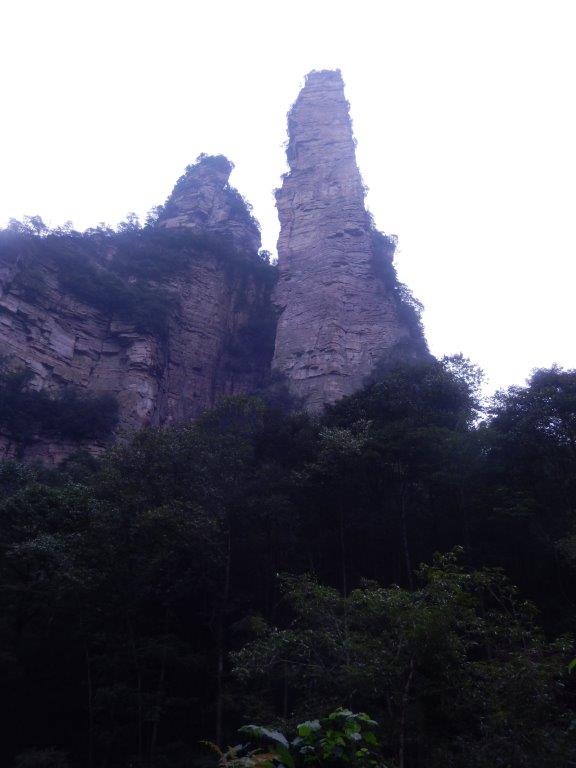 The Golden Whip Stream, where the crag is located, is a popular hiking trail, offering views of various other scenic spots like “Splitting the Mountain to Save Mother” and “Zicao Pool“.
The Golden Whip Stream, where the crag is located, is a popular hiking trail, offering views of various other scenic spots like “Splitting the Mountain to Save Mother” and “Zicao Pool“.
The trail following the stream was very well paved, which is very often the case in popular areas of China …
Golden Whip Stream (Jinbianxi), or Golden Whip Brook is a part of Zhangjiajie National Forest Park, the natural heritage of the world. The stream, with 7.5 km’s length, is named after one of the 10 wonders of Zhangjiajie – Golden Whip Rock. Golden Whip Stream Scenic area has various kinds of plants and animals, and peaks and rocks of different appearances alongside. The trail along the stream is the most stunning hiking trail in Wulingyuan Scenic Area.
A multitude of visitors hold the opinion that this particular waterway is the epitome of beauty and leaves a lasting impression. It is widely regarded as one of the most picturesque spots on the globe and constitutes an indelible part of the Zhangjiajie experience for tourists. Personaly I thought it a very beautiful and impressive trail, BUT… I think other spots, mainly in Yuanjiajie, Yellow Dragon Cave and in Tianzi Mountain parts of the park are way more impressive. What did come as a pleasant surprise however, was the abbundance of wildlife in this low area of the park. Lots of birds, insects, monkees and even amphibians, although you need to be really lucky to see those last ones.
Journey to the West
When The Wandelgek first started travelling outside of Europe, which was in 1999, he went to the Chinese province of Tibet (Xizang). Het travelled with a dutch budget travel tour operator specialized in China travels, named Koning Aap Reizen, which translates into English as Monkey King Travels. During his travels he learned more about this Monkey King, which was a fictional character from a famous Chinese travel novel.
The Monkey King
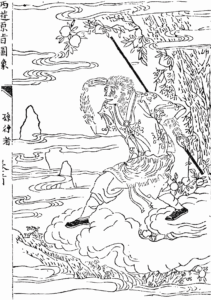 Sun Wukong (Chinese: 孫悟空), also known as the Monkey King, is a literary and religious figure best known as one of the main characters in the 16th-century Chinese novel Journey to the West. In the novel, Sun Wukong is a monkey born from a stone who acquires supernatural powers through Taoist practices. After rebelling against heaven, he is imprisoned under a mountain by the Buddha. Five hundred years later, he accompanies the monk Tang Sanzang riding on the White Dragon Horse and two other disciples, Zhu Bajie and Sha Wujing, on a journey to obtain Buddhist sutras, known as the West or Western Paradise, where Buddha and his followers dwell.
Sun Wukong (Chinese: 孫悟空), also known as the Monkey King, is a literary and religious figure best known as one of the main characters in the 16th-century Chinese novel Journey to the West. In the novel, Sun Wukong is a monkey born from a stone who acquires supernatural powers through Taoist practices. After rebelling against heaven, he is imprisoned under a mountain by the Buddha. Five hundred years later, he accompanies the monk Tang Sanzang riding on the White Dragon Horse and two other disciples, Zhu Bajie and Sha Wujing, on a journey to obtain Buddhist sutras, known as the West or Western Paradise, where Buddha and his followers dwell.
At this location, somewhere along the trail, scenes for the 60’s television series: Journey to the West were filmed. This series, based on a 16th century novel, contained some for that time highly sophisticated special effects, which seem pretty outdated though.
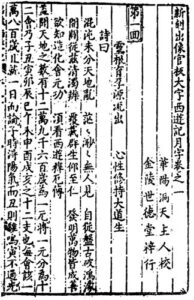
Earliest known edition of the book, published by the Shidetang Hall of Jinling, from the 16th century.
Journey to the West (Chinese: 西遊記) is a Chinese novel published in the 16th century during the Ming dynasty and attributed to Wu Cheng’en. It is regarded as one of the great Chinese novels, and has been described as arguably the most popular literary work in East Asia. It is widely known in English-speaking countries through the British scholar Arthur Waley’s 1942 abridged translation Monkey.
A large movie television screen was showing different scenes from the television series Journey to the West, which were filmed here in Zhangjiajie National Forest Park.
The novel is a fictionalized and fantastic account of the pilgrimage of the Chinese Buddhist monk Xuanzang, who went on a 16-year journey to India in the 7th century AD to seek out and collect Buddhist scriptures (sūtras). The novel retains the broad outline of Xuanzang’s own account, Great Tang Records on the Western Regions, but embellishes it with fantasy elements from folk tales and the author’s invention. In the story, it deals entirely with the earlier exploits of Sun Wukong, a monkey born on Flower Fruit Mountain from a stone egg that forms from an ancient rock created by the coupling of Heaven and Earth, and learns the art of the Tao, 72 polymorphic transformations, combat, and secrets of immortality, and whose guile and force earns him the name Qitian Dasheng (simplified Chinese: 齐天大圣; traditional Chinese: 齊天大聖), or “Great Sage Equal to Heaven” and was tasked by Bodhisattva Guanyin and the Buddha to become Tang Sanzang’s first disciple, with journeying to India and provides him with 3 other disciples who agree to help him in order to atone for their sins: Zhu Bajie, Sha Wujing and White Dragon Horse. Riding the latter, Sanzang and his 3 disciples journey to a mythical version of India and find enlightenment through the power and virtue of cooperation.
Journey to the West has strong roots in Chinese folk religion, Chinese mythology, Chinese Buddhism, Confucianism, Taoist and Buddhist folklore, and the pantheon of Taoist immortals and Buddhist bodhisattvas are still reflective of certain Chinese religious attitudes today, while being the inspiration of many modern manhwa, manhua, manga and anime series. Enduringly popular, the novel is at once a comic adventure story, a humorous satire of Chinese bureaucracy, a source of spiritual insight, and an extended allegory.
This large boulder stone seemed to point toward the mountain formation called:
Splitting the Mountain to Save Mother
“Splitting the Mountain to Save Mother” (劈山救母) is a famous Chinese mythological story. It tells of the hero Liu Chenxiang, who splits Mount Hua to rescue his mother, the Three Holy Mothers, from imprisonment. The Three Holy Mothers, a celestial being, defied the laws of heaven by marrying a mortal man. Her brother, the powerful god Erlang, imprisoned her beneath Mount Hua as punishment. Liu Chenxiang, their son, trains to become a powerful warrior and ultimately splits the mountain to reunite with his mother.
-
The Legend:
The story is rooted in the Chinese myth of the Magic Lotus Lantern (also known as “Splitting the Mountain to Save Mother”).
-
The Characters:The story centers around the Three Holy Mothers, a goddess who falls in love with a mortal, and their son, Erlang.
-
The Conflict:
The Three Holy Mothers’ marriage to a mortal man violates the rules of heaven, leading to her imprisonment by her brother, Erlang.
-
Liu Chenxiang’s Role:
Liu Chenxiang is the hero who, upon reaching adulthood, trains and develops the power to split the mountain to free his mother.
-
Key Symbol:The Axe-splitting Rock on Mount Hua is a visual representation of this legendary act of filial piety and heroism.
This area and specificly the shapes of the rocks or mountains is so vividly sparkling imagination that it does seem that every single mountain or rock has its own legend to tell.
Wildlife in Zhangjiajie National Forest Park
The Wandelgek was pleasantly surprised by the large amount of animal wildlife that he spotted in this section of the National Park. Golden Whip Stream, located in China’s Zhangjiajie National Forest Park, is known for its diverse wildlife, including wild monkeys and Chinese giant salamanders. Visitors can encounter various animals such as birds, fish, insects, and the prominent wild macaques that are often seen along the stream, sometimes begging for or snatching food.
-
Wild Monkeys (Macaques):
These are the most commonly encountered animals at Golden Whip Stream and are known to interact with tourists, sometimes aggressively if not properly managed.
-
Chinese Giant Salamander:
Golden Whip Brook is a designated area for the protection of the critically endangered Chinese giant salamander, though they are rare to spot due to their hidden nature.
-
Fish:
The stream itself is home to various fish species, with notable features like Fish Jumping Pool, a common breeding ground where fish are seen jumping during spawning season.
-
Birds, Butterflies, and Dragonflies:
The area’s rich ecosystem also supports numerous bird species, butterflies, and dragonflies.
-
Other Wildlife in Zhangjiajie:Beyond the immediate stream area, the broader Zhangjiajie National Forest Park also hosts a wider array of animals including deer, bison, wild goats, wild boars, rabbits, civet cats, bats, flying squirrels, weasels, squirrels, and frogs.
Indian Bull Frog (Tiger Frog)
It started almost immediately at the entrance where he spotted this tiny amphibian. A small frog which had positioned itself on top of a seperation wall to catch some sunlight and have an excellent overview of the vicinity …
The “tiger frog” primarily refers to Hoplobatrachus tigerinus, also known as the Indian bullfrog or Asian bullfrog, which is a large, semiaquatic frog found in South and Southeast Asia, and introduced to Madagascar. There is also the “tiger-legged monkey frog” (Phyllomedusa tomopterna), which is distinct and known for its walking gait and orange, tiger-striped underbelly.
The photo’s are not brilliant, but in my defense, I had not unpacked my camera yet and was startled seeing this frog, not in the forest further away but almost at the ticket office.
Butterflies
There were some pretty red flowers beside the trail and of course they attracted these black butterflies …
… and the Golden Whip Stream attracts birds like e.g. :
The Slaty-backed forktail
The slaty-backed forktail (Enicurus schistaceus) is a species of forktail in the family Muscicapidae. A slim, medium-sized forktail, it is distinguished from similar species by its slate grey forehead, crown, and mantle. It has a long and deeply forked tail banded in black and white, a white rump, and a white bar across its primary feathers; the rest of the plumage is predominantly white. The sexes look alike. The bird frequents the edges of fast-flowing streams and rivers, where it hunts small invertebrates by hopping among rocks or flying out over the water. It breeds between February and July, laying 3–4 pinkish, bluish, or white eggs; both sexes incubate the eggs.
Macaques
As I wrote earlier in this blogpost, the Monkey King roams these landscapes an so do his cousins, nephews and offspring …
Macaques are probably the most common animal seen in these parts of the National Park.
… and they had younglings now …
Golden Whip Stream is home to a group of wild macaques, which are often seen in the gorge along the stream, especially around the entrance, the section from Fish Jumping Pool to Purple Grass Pond, and near the U-shaped valley.
These monkeys are territorial and agile, and they may actively approach tourists to beg for or snatch food and belongings.
The monkey above had found some delicious bananas.
The younglings were anxiously discovering their new world …
The macaques constitute a genus (Macaca) of gregarious Old World monkeys of the subfamily Cercopithecinae. The 23 species of macaques inhabit ranges throughout Asia, North Africa, and Europe (in Gibraltar).
Macaques are principally frugivorous (preferring fruit), although their diet also includes seeds, leaves, flowers, and tree bark. Some species such as the long-tailed macaque (M. fascicularis; also called the crab-eating macaque) will supplement their diets with small amounts of meat from shellfish, insects, and small mammals. On average, a southern pig-tailed macaque (M. nemestrina) in Malaysia eats about 70 large rats each year. All macaque social groups are arranged around dominant matriarchs.
The Monkey King still rules over Zhangjiajie
The rhesus macaque (Macaca mulatta), colloquially rhesus monkey, is a species of Old World monkey. There are between six and nine recognised subspecies split between two groups, the Chinese-derived and the Indian-derived. Generally brown or grey in colour, it is 47–53 cm (19–21 in) in length with a 20.7–22.9 cm (8.1–9.0 in) tail and weighs 5.3–7.7 kg (12–17 lb). It is native to South, Central, and Southeast Asia and has the widest geographic range of all non-human primates, occupying a great diversity of altitudes and habitats.
Some really posed for my camera 🤩
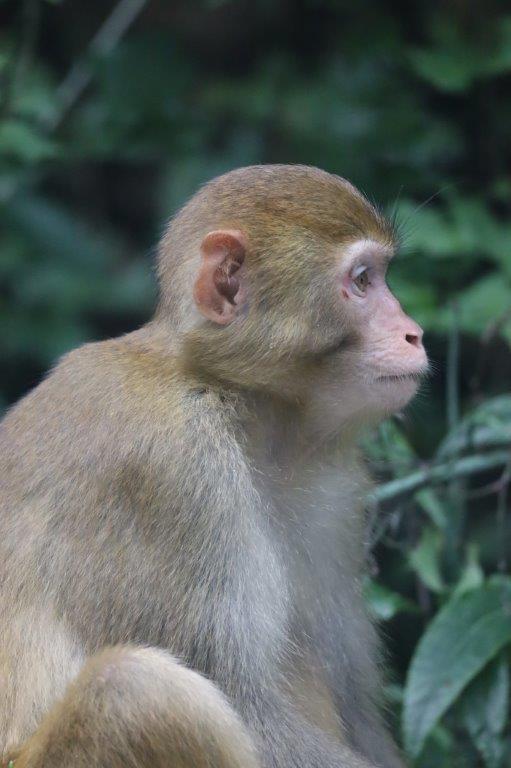 Then something incredible happened. The Wandelgek spotted a:
Then something incredible happened. The Wandelgek spotted a:
Giant Salamander
Where the Macaques were as common as can be, my guide Gaby assured me that the Giant Salamander was as rare as could be and although present is this part of the National Park, it was very seldomly spotted.
And thus The Wandelgek did spot one 🤣😂🥳
It was also immediately clear why it was seen do rarely. Look at that camouflage!
The Chinese giant salamander (Andrias davidianus) is one of the largest salamanders and one of the largest amphibians in the world. It is fully aquatic, and is endemic to rocky mountain streams and lakes in the Yangtze river basin of central China. It has also been introduced to Kyoto Prefecture in Japan, and possibly to Taiwan. It is considered critically endangered in the wild due to habitat loss, pollution, and overcollection, as it is considered a delicacy and used in traditional Chinese medicine. On farms in central China, it is extensively farmed and sometimes bred, although many of the salamanders on the farms are caught in the wild. It has been listed as one of the top-10 “focal species” in 2008 by the Evolutionarily Distinct and Globally Endangered project.
One of the largest amphibians in the world and still, when it kept still, it could not be distinguished from the river bed rocks it was lying between. That is brilliant camouflaging!
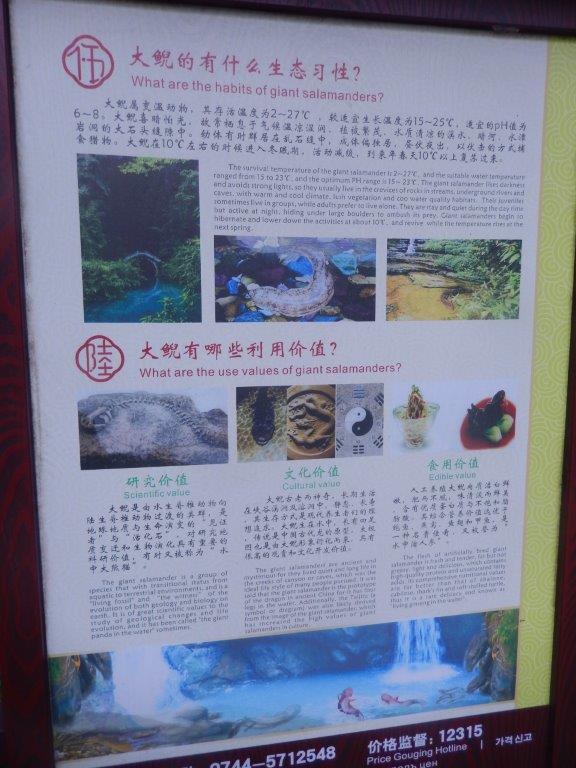 Gaby told me she had been coming here for a long time, but this was her 1st sighting of a Griant Salamander too.
Gaby told me she had been coming here for a long time, but this was her 1st sighting of a Griant Salamander too.
And this tiny movement is why it was spotted:
After returning to the entrance, de taxi picked us up and we drove first toward Zhangjiajie Town and my new hotel.


